















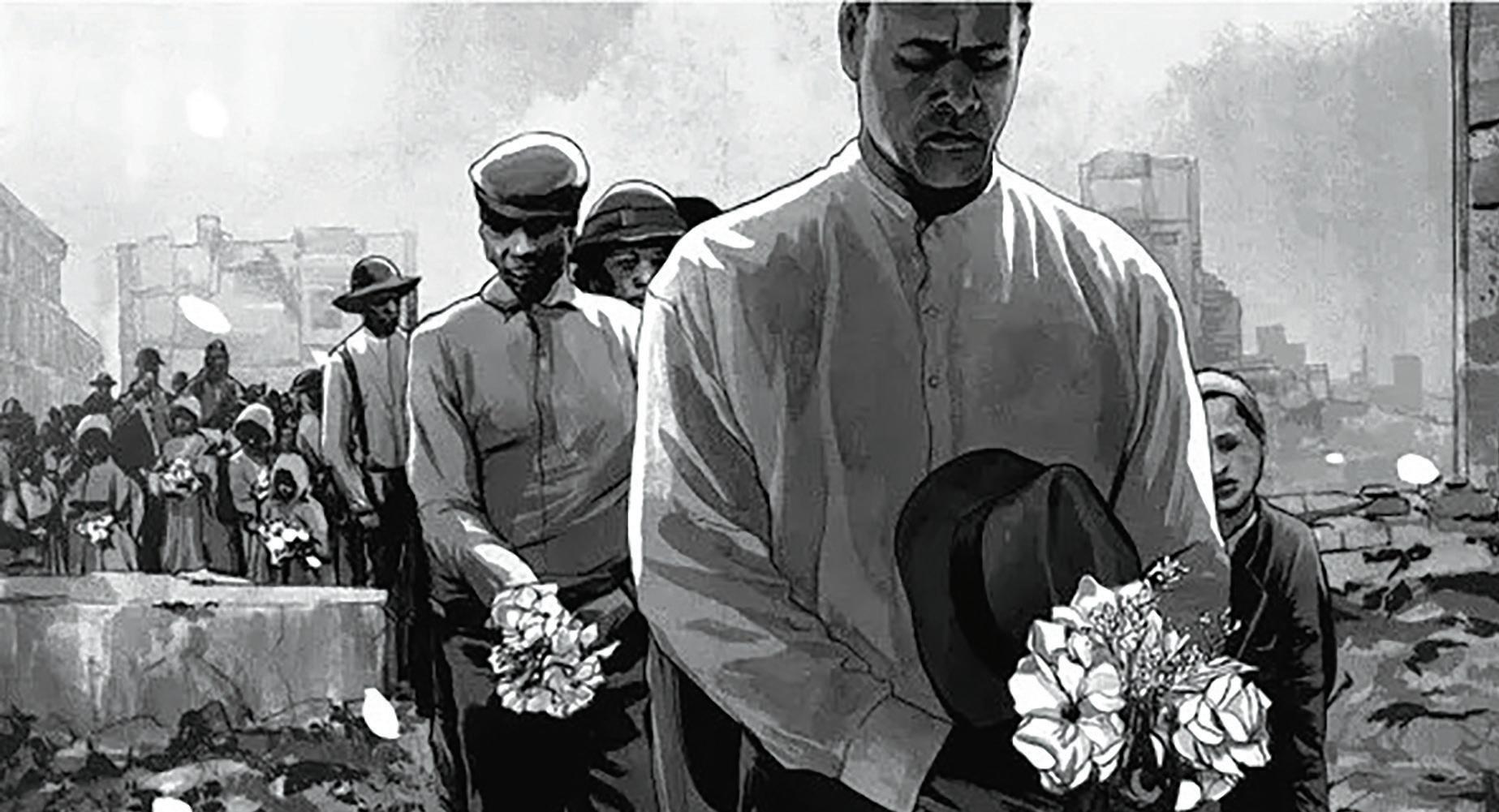
Voice & Viewpoint Staff Writer




State Assembly casts unanimous vote
On May 1, 1865, over 10,000 people — recently freed slaves, black schoolchildren, colored soldiers and their allies — held what was the first Memorial Day parade.
In spite of a number of people and locations who seek to take the credit, the first Memorial Day was held by former slaves in Charleston, South Carolina. During the Civil War, Union Army soldiers who were prisoners of war were held at the Charleston Race Course. It is reported that at least 257 Union prisoners died there and were quickly buried in unmarked graves. The bodies had been buried under the bleachers of the race track. After the war, a group of black workmen dug up the bodies and reburied them to properly honor the fallen.
See MEMORIAL DAY page 2
California is moving towards officially apologizing for the horrors African Americans endured during chattel slavery after the State Assembly voted unanimously to approve Assembly Bill (AB) 3089 on May 16.
Authored by Assemblymember Reggie Jones-Sawyer (D-Los Angeles), the “California Apology Act for the Perpetration of Gross Human Rights Violations” sailed through the Assembly with a 64-0 floor vote.
See SLAVERY page 2

Mayor Todd Gloria partially restores programs targeting equity, is it enough?
By Macy Meinhardt & VIEWPOINT STAFF WRITERAmid intense pushback from community members on the proposed $5.46 billion budget, Mayor Todd Gloria announced Tuesday that cuts to equity won’t be as drastic as originally proposed.
“The budget is a moral document. It shows where our policymakers’ priorities are,” said Kearea O’Laughlin, senior research advisor for Community Budget Alliance. The

The Supreme Court on Wednesday, May 15th, ordered Louisiana to hold congressional elections in 2024 using a House map with a second mostly Black district, despite a lower-court ruling that called the map an illegal racial gerrymander.
The order allows the use of a map that has majority Black populations in two of the state’s six congressional districts, potentially boosting Democrats’ chances of gaining control of the closely divided House of Representatives in the 2024 elections.
The justices acted on emergency appeals filed by the
state’s top Republican elected officials and Black voters who said they needed the high court's intervention to avoid confusion as the elections approach. About a third of Louisiana is Black.
The Supreme Court’s order does not deal with a lower-court ruling that found the map relied too heavily on race. Instead, it only prevents yet another new map from being drawn for this year's elections. The Supreme Court could decide at a later date to hear arguments over the decision striking down the Louisiana map.
See VOTE page 2
Alliance has been active in the fight to ensure that this year’s budget cycle reflects an equitable use of public dollars within the City budget, made up of a coalition of 31 community, labor, and faith-based organizations.
The mayor originally proposed to cut $36 million in equity-related programs in his first budget proposal released back in April. Within the community, particularly District 4, this created a storm of opposition inflicted upon the Mayor’s office. Amid one of the budget hearings held at city hall, a large crowd stood
outside with picket signs, making remarks on how the mayor must “hate poor people”, as they advocated against the reversal of any move that would further disinvest their community.
“Advocacy makes a difference,” said Council President pro Tem Joe LaCava during the May 14 press conference. “The community spoke, the Council listened, and the Mayor responded by restoring programs that protect neighborhoods.”
See BUDGET page 2
Ed Dwight, the pioneering African American who came close to becoming America’s first Black astronaut six decades ago, achieved his long-awaited journey into space at the age of 90. On Sunday, May 19, Dwight, along with five crewmates, soared aboard Blue Origin’s New Shepard rocket.
The liftoff from Blue Origin’s West Texas launch site was the company’s first passenger flight in nearly two years. This approximately 10-minute suborbital flight etched Dwight’s name in history as the oldest person to reach space, surpassing Star Trek actor William Shatner, who held the record at age 90 until Dwight’s journey.
See ASTRONAUT page 15





Continued from cover
“They paraded around the racetrack, and then they gathered as many as could fit into the cemetery compound. About three or four black preachers read from script,” said David Blight, a professor of history at Yale University and director of the Gilder Lehrman Center for the Study of Slavery. His research is responsible for bringing this little known history to light. It was observed by the historian that the white South controlled much of the nation’s narrative, which explains
Continued from cover
AB 3089 is one of 14 reparations bills supported by the California Legislative Black Caucus (CLBC) this legislative session.“Not only is the apology letter important, but it’s also what we do after it becomes law,” Jones-Sawyer said of AB 3089 after the legislation passed.
“It’s whether or not we go ahead and fulfill the dream of what my ancestors wanted, which is fully to make us part of the American dream. And most importantly, get rid of the river of racism that has been running through our communities for so many decades and centuries.”
Assemblymembers Mia Bonta (D-Alameda), Akilah Weber (D-La Mesa), Tina McKinnor (D-Inglewood), and Corey Jackson (D-Moreno
Continued from cover
The revised budget oversees a $13.5 million increase in the General Fund related to the restorations of neighborhood and homeless services that were initially reduced. Some of the equity programs proposed to be revived in the new budget include free city wifi, gang violence prevention, tenant protection programs, and investments in park and recreation centers in underserved communities.
why this heroic story was practically erased.
At the May 1, 1865 celebration, it is reported that three thousand black children carried roses and sang “John Brown’s Body,” a tribute to the “fervent abolitionist”. It is reported that they also sang “The Star-Spangled Banner,” and that Black women followed with flowers, wreaths, and crosses. Black men and Union soldiers followed behind them. By the end of the procession the graves were covered in rose petals.
It is suggested that the ex-slaves were paying tribute to the dead who gave their lives for
Valley) — all members of the CLBC — spoke on the Assembly floor before the historic vote.
Former Speaker of the Assembly Anthony Rendon (D-Lakewood) spoke in support of the legislation. “This is a statement of our values, this is a statement of who we are and what we think at this moment and that’s why it is so important to all of us,” Rendon said of the legislation.
Current Assembly Speaker Robert Rivas shared his thoughts about the historical bill. Rivas invoked the words of Dr. Martin Luther King from a letter he wrote commending the sacrifice and success of Cesar Chavez after he staged a 300-mile walk from Delano to the State Capitol in 1966. “As we know that it is undeniable that our systems of government have been complicit in the oppression of African Americans,” Rivas said. “Our courts, our schools (and) even this Legislature, California history is tarnished by
Most programs that the community advocated to keep appear to have been partially restored within the revised budget. However, it does leave off a few key ones, such as the Office of Immigrant Affairs and the Cannabis Equity Fund. Both remain slated to be shut down altogether for this next fiscal year. Meanwhile, the proposed drain of the $3.1 million in the Community Equity Fund from the Office of Race and Equity also appears to be going through.
Yet, the City claims that it must continue to make “tough decisions” like program cuts to
Crude oil, gasoline, diesel fuel, and other petroleum products can expose you to chemicals including toluene and benzene, which are known to the State of California to cause cancer and birth defects or other reproductive harm. These exposures can occur in and around oil fields, refineries, chemical plants, transport and storage operations, such as pipelines, marine terminals, tank trucks, and other facilities and equipment. For more information go to: www.P65Warnings.ca.gov/petroleum.
The foregoing warning is provided pursuant to Proposition 65. This law requires the Governor of California to publish a list of chemicals “known to the State to cause cancer or reproductive toxicity.” This list is compiled in accordance with a procedure established by the Proposition, and can be obtained from the California Environmental Protection Agency. Proposition 65 requires that clear and reasonable warnings be given to persons exposed to the listed chemicals in certain situations.
the ex-slaves’ freedom. Writing in the New York Times, Blight the historian wrote of the ex-slaves, “by their labor, their words, their songs, and their solemn parade on their former owner’s racetrack, black Charlestonians created the Independence Day of a Second American Revolution.”
It has been suggested that the African American origins of the holiday were later suppressed by white Southerners who regained power in the South after the end of Reconstruction, and then claimed Memorial Day as a holiday of reconciliation for white Americans.
the subjugation of Black people.”
AB 3089 mandates California to recognize and accept responsibility for “all of the harms and atrocities committed by the state, its representatives thereof, and entities under its jurisdiction who promoted, facilitated, enforced, and permitted the institution of chattel slavery,” as stated in the bill’s language. It also addresses the enduring legacy of “ongoing badges and incidents from which the systemic structures of discrimination.”
AB 3089 would require a plaque memorializing the apology and “publicly and conspicuously installed and maintained” in the confines of the State Capitol.“AB 3089 recognizes the harm that slavery had and continues to have on Black Californians and takes the important step of acknowledging and formally apologizing for the state’s role in harming the descendants of enslaved people slavery,” McKinnor said.
balance and protect the budget. This is due to a $172 million structural deficit San Diego is facing right now.
Other moves Gloria’s administration is doing to counter this include a decrease in hiring, a 2% reduction mandate across all departments, pulling back unused dollars into the General Fund, and temporarily suspending contributions to the City’s reserves.
“As your Mayor, I committed to San Diegans that I would draw upon my years of experience to guide us through this difficult financial time and avoid major impacts,” says Mayor Gloria.
Essential services the City seeks to protect within this budget include public safety, and homelessness, such as the new 1,000-bed shelter, fire stations, library hours, and recreation centers.
“This budget is balanced and on time and protects the progress we’ve made on the issues San Diegans care about most,” the mayor asserts.
Despite the restorations and grim financial climate, the budget is still subject to skepticism.
“The May revision doesn't change the fact that the Mayor is proposing to balance the budget on the backs of low-income communities,” O’Laughlin said.
A breakdown of highlighted restorations is as follows:
San Diego Housing Commission:
• Eviction Prevention Program
• Multidisciplinary Outreach Team
• Housing instability Prevention Program
• Neil Good Day Center
A lawyer for the Black voters praised the court’s action. “We are very relieved that SCOTUS agreed with us that it’s too close to the election to insert uncertainty. ... We will have a map with 2 majority black districts this fall,” Jared Evans, an attorney with the NAACP Legal Defense and Education Fund, wrote in a text using an abbreviation for the Supreme Court.
In the North, a General John A. Logan proclaimed Decoration Day as a nationwide Observance. He used his position to make a tradition which had started in the south three years earlier by some freed African Americans to start a process that led to the name “Memorial Day,” first used in 1882. “Memorial Day” was not declared the official name of the holiday until a Federal law was passed in 1967. A year later, Congress passed the Uniform Monday Holiday Act which created a three day holiday which has evolved into a national time to honor fallen soldiers.
Another bill, SB 1050 — Reparations: Restitution for Property Taking — was approved with a 5-2 vote. It establishes a process for the state to review and investigate public complaints from individuals who claim their property was taken without just compensation or as an outcome of racially motivated eminent domain procedure. SB 1050 establishes a process for providing compensation to the rightful owner of the property. SB 1331 received a 5-2 vote as well. Titled “Fund for Reparations,” the bill creates a specific fund for Reparations and Restorative Justice in the state treasury for the purpose of funding compensation to eligible Black Californians. The bill would authorize the fund to receive monies from any other federal, state, or local grant, or from any private donation or grant.
READ THE FULL ARTICLE ONLINE AT WWW.SDVOICE.INFO
Parks and Recreation
• Teen Center programming in historically underfunded Districts 4, 8, & 9.
• Restoration in youth swimming programs
• Restoration in the “Come Play Outside” program, an effort to provide low-cost and free programs, like “Movies in the Park” to low-income communities
Digital Equity
• Restoration to maintain free City wifi kickstarted by the San Diego Parks Foundation
• Restoration to maintain library hotspot checkouts
• Restoration to maintain digital literacy programming
No Shots Fired Program
• Restoration to maintain collaborative effort to provide outreach and resources to known gang members in specific communities and offer them an opportunity to exit gang life
The takeaway appears that the City and Mayoral administration made subtle moves within this new budget document that addressed some of the complaints residents had about defunding. The next process of the budget cycle will be on June 7th when San Diego City Council members will debate the proposed budget modifications. This will be coupled with a public hearing, signifying the last chance that community members will have to advocate for what they want to see in their budget.
Noting the size of the state’s Black population, civil rights advocates challenged the map in a Baton Rouge-based federal court and won a ruling from U.S. District Judge Shelly Dick that the districts likely discriminated against Black voters.
The 5th U.S. Circuit Court of Appeals gave lawmakers in Louisiana a deadline of early 2024 to draw a new map or face the possibility of a court-imposed map.
For more information, please call: 1-800-523-3157
Edward Greim and Paul Hurd, attorneys for plaintiffs who challenged the new map said Wednesday’s order lets the state impose a “brutal racial gerrymander” on 2024 voters who will cast ballots in districts “segregated by race.” But they predicted eventual victory in the case.
Louisiana has had two congressional maps blocked by federal courts in the past two years in a swirl of lawsuits that included a previous intervention by the Supreme Court. The state’s Republican-dominated legislature drew a new congressional map in 2022 to account for population shifts reflected in the 2020 Census. But the changes effectively maintained the status quo of five Republican-leaning majority white districts and one Democratic-leaning majority Black district.
A different set of plaintiffs, a group of self-described non-African Americans, filed suit in western Louisiana, claiming that the new map was also illegal because it was driven too much by race, in violation of the Constitution. A divided panel of federal judges ruled 2-1 in April in their favor and blocked use of the new map.
Voting patterns show a new mostly Black district would give Democrats the chance to capture another House seat and send a second Black representative to Congress from Louisiana. Democratic state Sen. Cleo Fields, a former congressman who is Black, had said he will run for Congress in the new district, if it’s in place for the next election.

Assistant San Diego Police Chief Scott Wahl, a 25 year veteran, has been confirmed by the San Diego City Council as the next Chief of Police. His appointment becomes official as of the June retirement of current chief, David Nisleit. Although the Mayor engaged in a process that “allowed 21 community leaders to vet the finalists”, the process should not stop there.
There has been much discussion about the new chief meeting with “community leaders”. While this sounds like a noble idea, it is flawed.
No group of people or individuals in San Diego have been elected or designated as “community leaders” other than those who hold elected office. To criticize the new Chief for meeting with some individuals while at the same time
proposing that he meet with other individuals so designated by a different group of people is wrong.
The San Diego Voice & Viewpoint proposes that the new Chief of Police hold a series of community Town Hall meetings for the express purpose of hearing directly from the citizens of San Diego. Because of his 25 years of service, he already knows the communities and the people who live in them. Such a meeting would go a very long way in establishing his personal connection in a way in which his predecessors did not, in spite of their longevity on the San Diego Police force.
To Chief Wahl, we would say, beware of those who would present themselves to you as leaders and spokespersons for others when there is no sign that they have been so ordained. When in doubt, talk to the people directly. Above all, try to weed out those officers who don’t seem to understand that the key is to treat others as you would like to be treated. A little respect, for those who still don’t know this, still goes a long way.
While the mainstream news media is fixated on the Trial of Donald Trump and his soaring poll numbers in spite of his legal problems, someone needs to have a conversation with President Biden about how he got in office and why he is losing the Black vote in particular, when he and the Democratic Party appear to think they have done enough for Black folks.
The Democratic Party appears to have forgotten that all states are “battleground states” if you are losing where you should be winning. Wake up call: the Black Vote is not concerned with a speech at Morehouse, or a meeting with the “Divine Nine”, which does not represent rank and file voters in the Black communities.
The Democratic Party continues to “Cherry Pick’ the Black communities of this nation and the Black Press
along with them. Well guess where the Black Press is located, in the Black communities. There is an assumption that Black people will vote for Joe Biden because they did the last time. Well, Black people have not forgotten that he did not deliver on the George Floyd Act or the John Lewis Voting Rights Act. Neither did he put the same energy into seeking passage of these two pieces of legislation as he did in trying to find ways, through Executive Orders, to bring relief in the face of the Supreme Court’s overturn of Roe vs. Wade.
Vice President Harris is Black and a HBCU graduate, but that does not mean she is in touch with the Black Voter. She is respected for the position she holds, but that will not be enough to keep it.
Donald Trump, on the other hand, is a known entity that is increasingly appealing to a Black male voter who has no knowledge of the Civil Rights struggle and what we stand to lose under Trump. They are not bothered by the Stormy
Daniels affair or any of the other women in Trump’s life. Some are out of jail because of Trump actions during his Presidency. They are not concerned about Democrats or Republicans, only higher food and gas and rent and inflation. You reach these men and women through the Black Press. Remember, they don’t have to vote. All they have to do is stay home and Trump wins. I think now — and not in September or October — is the time for a media campaign with the Black Press. Without such a campaign, there is no need to go to the Democratic National Convention. The absence of a Black media campaign is the exclusion of the Black Vote.
Black Americans who have lived through less than equality, with all sorts of disparities, will survive under a Donald Trump no matter what he does.
Question: Will it be Biden or Trump? It’s up to you, Mr. President, and not your advisors who have failed you so far.

Jessica Pettway did not need to die from cervical cancer. What will we do to make sure that another Black woman does not die? Jessica Pettway, 36, beauty influencer, mom, and wife passed away on March 11, 2024, from cervical cancer.
Black women are constantly forced to disappear or comply with healthcare provider plans without being informed of all of the options. Black women are constantly bombarded with messages of our mortality. What Jessica Pettway’s death reminds us is that Black women encounter the bombardment of racism, sexism and medical dismissiveness.
In her last social media post, Jessica shared how she wanted women to advocate for their own

health. We believe that in order for women to advocate for their own health, we must also know what we are advocating for. Black women deserve to be listened to because we know and trust our bodies.
April 11 through 17 was Black Maternal Health Week which was founded by Black Mamas Matter Alliance (BMMA). The week is “a time of awareness, activism and community-building aimed at amplifying the voices of Black mamas, bringing visibility to Black-led maternal health initiatives, and centering the values and traditions of the reproductive and birth justice movements.”
This year’s theme was “Our Bodies Still Belong to Us: Reproductive Justice Now” and given this, we would like to honor Jessica Pettway and highlight that reproductive justice is inclusive of gynecologic care.
Cervical cancer, a gynecological disorder, can affect everyone who has a cervix. People over 30 are more likely to be diagnosed with it. Cervical cancer is mostly caused by persistent infection with specific strains of the human papillomavirus (HPV) virus. A common virus, HPV, is transferred from one person to another during sexual activity. When detected early, cervical cancer is one of the most preventable and treatable cancers. By combining vaccination, early
screening and access to health care we can decrease the number of late stage cervical cancer cases. It is important to know that in the last 50 years, cervical cancer rates have declined, but survival rates have not altered significantly, and there remains notable racial disparities in disease identification.
Unfortunately, the number of women who need to get screened for cervical cancer is rising, and the number of late-stage cases is increasing. This means that by the time we are seen and diagnosed, the cancer is at an advanced stage. As a result, Black women are becoming the face of cervical cancer deaths amid the other health disparities that we face.
As nurse midwives, we want to present straightforward points that every Black person with a cervix needs to carry with them so that we do not continue to be the face of these statistics.
1. Get checked! Please take care of yourself. We know that you have a lot on your todo list. Our concern is that YOU are not on this to-do list. Please schedule your annual well-person appointment (dental and optical appointments as well). No shade. We need to schedule ours too! We understand that going to see your healthcare provider when you are healthy doesn’t seem that important. But, it is.
2. Don’t discount abnormal symptoms. If it seems abnormal to you, then go get checked! Cervical cancer sometimes does not present with major symptoms. But if you are noticing things that are concerning, it is important for you to report these things to your trusted healthcare provider.
3. Trust your body. As two Black midwives, we trust and believe when you are concerned about your body. We see you and understand that your path to health might not be linear due to racism, implicit bias and the world’s perception of us.
You are the boss of your body and we believe this. We see you. We believe you. We love you. You are your biggest priority and in order to continue the ever-growing list of “to-do’s”, let’s — together — continue the conversations about how to take care of ourselves.
Aiyana Davison (she/her) is a Certified Nurse Midwife and Women’s Health Nurse Practitioner currently practicing in Southern California.
Lodz Joseph-Lemon (she/her) is a Certified Nurse Midwife currently practicing in Southern Arizona.
This commentary originally appeared in Black Voice News.




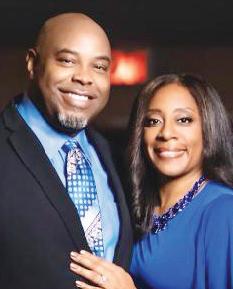

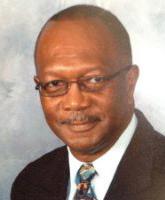

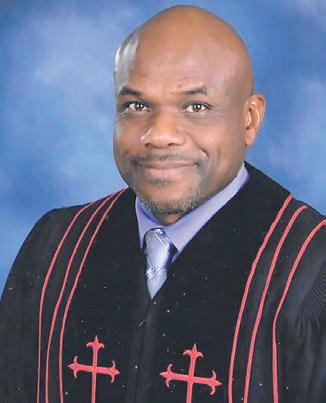

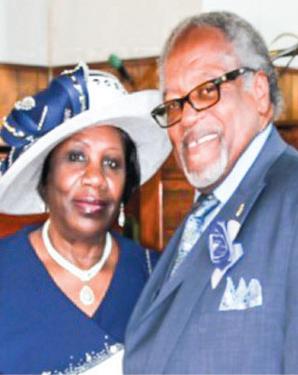

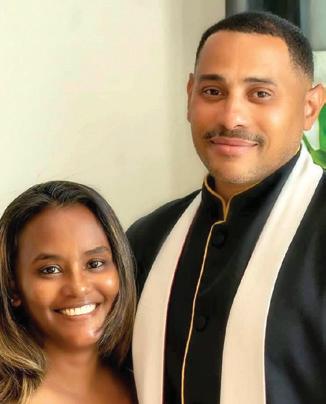
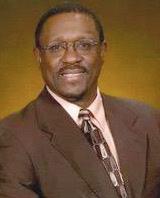





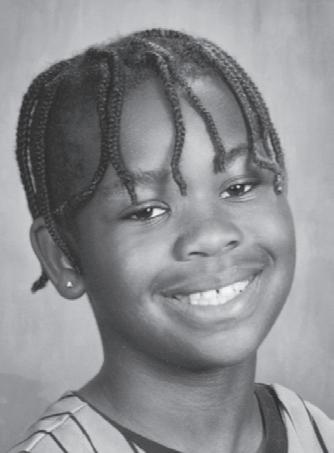
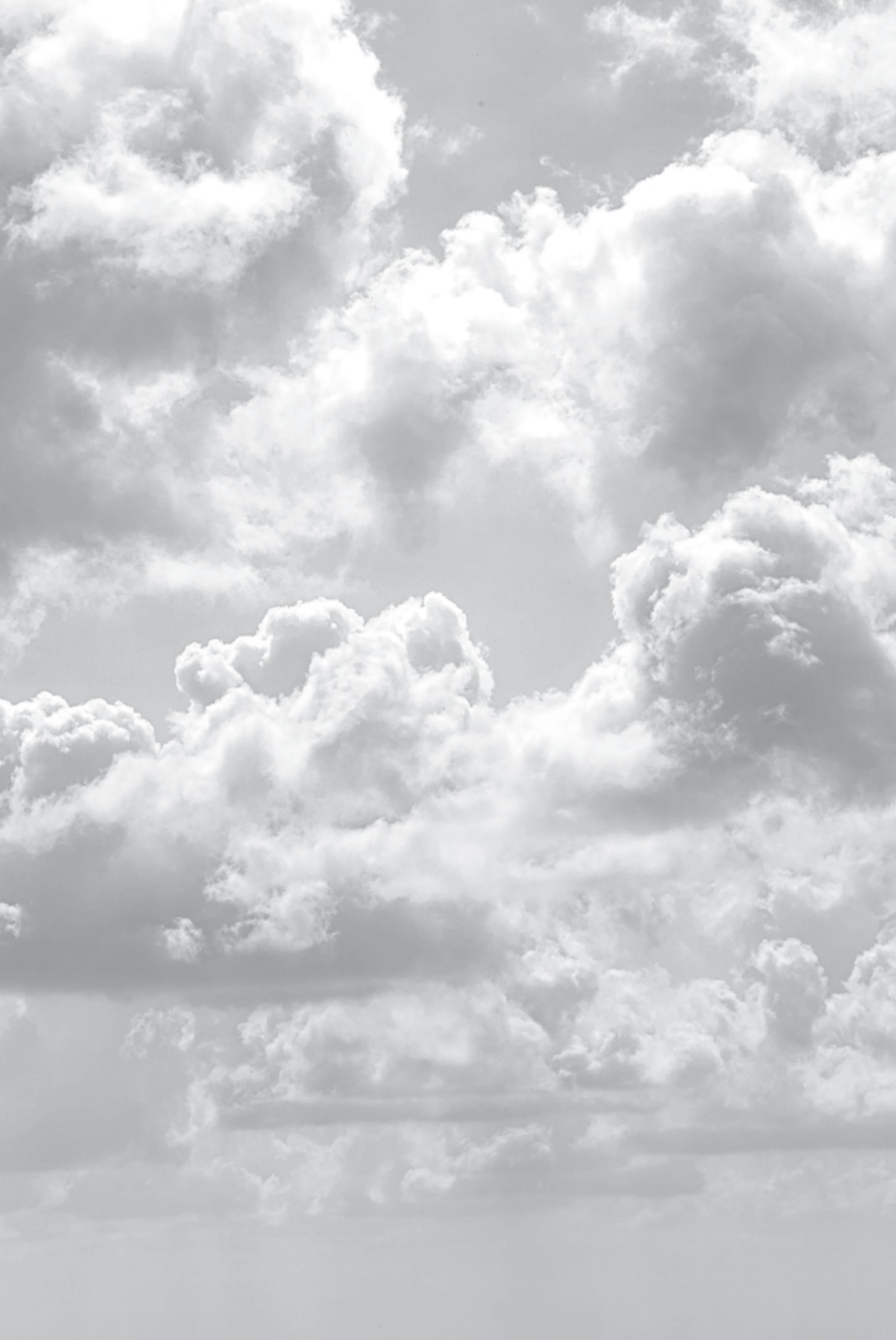
SUNRISE 03/15/2015
SUNSET 04/19/2024
ARRANGEMENTS BY PREFERRED CREMATION & BURIAL
Ashton Ray Burris was born March 15, 2015, in San Diego, CA, to Brenaé Jacobs and Ray Burris. He was the third born of 7 children. Ashton passed on April 19, 2024.
Ashton is survived by his Mother Brenaé Jacobs, Father Ray Burris, 5 brothers; Amare, Aiden, Ray (Poppa), Reiden, and Reyn, and sister Arayah. He is also survived by grandmother (NaNa) Gwendolyn Foxworth, grandfather Leonard “Jac” Jacobs, grandmother Terri Jacobs, great grandmother (Granny) Catherine Foxworth, aunts; Shantell Caldwell, Simone, TT, Temp, and Sada Jacobs, uncles; Kaishawn Carter, Shaquille Bush, and Leonard Jacobs Jr., great aunt Vertis Manley, and a host of aunts, uncles, cousins, family, and friends to mourn his passing.
Oh, my baby; my sweet, sweet baby Ashton. There will never be enough words to ever describe the kind of kid you are. Ashton Burris is what we named you as you entered this world on March 15, 2015. You were so chunky, and boy did you love to eat. You began to smile so early on and every day after, your smile grew bigger and bigger. He could always light a room with that smile (the life of the party).
Ashton loved going to school, Rios Elementary (my big 3rd grader). He would come home every single day and tell us at least 10 stories, and let me not forget how excited he was to be called the RIZZ KING (meaning all the ladies loved him).
How could you not love Ashton? He’s the sweetest, most loving, and helpful child I have ever come in contact with. He loves his brothers and sister with all his heart; he made sure to help with little ones and they adore him. Let’s not forget how he looked up to his big brothers Amare and Aiden; he copied everything they did!!!!
He loved Skateboarding. He loved Soccer. My everyday riding partner. He loved sweets (my mom would call him the candy man and sing this song to him, while he’d be laughing). Straight momma’s boy!
He made such an impact on the world with the love he showed! Smart, loving, helpful, caring, and consoling. He was everything!
-Mommy

SUNRISE 08/24/1950
SUNSET 05/10/2024
ARRANGEMENTS BY PREFERRED CREMATION & BURIAL
James Edward Anthony, of Chula Vista, CA, died on May 10, 2024. He was born on August 24, 1950.
He was a faithful and loved Pastor of the Mount Elem Baptist Church in Greenville, Texas, for 8 years, Associate Minister of the Kaiser St. Baptist Church for 11 years, and a dedicated 20-year U.S. Army veteran.
He was preceded in death by his father Crawley L. Anthony Sr., his mother Ellen Anthony, his stepmother Louis Anthony, his sister Wilma Jean Anthony, his youngest brother Ronald Joseph Anthony, and daughter-in-law Shondell Davis.
He is survived by his wife of 30 years; Wallese Anthony, one son; Kevin Davis, two daughters; Terri (Jonathan) Winbush and Aisha Givens, sisters; Lear B. Anthony, Lorab (Gary) Polk, brothers; William (Cynthia) Higgins, Crawley Lee (Odie) Anthony Jr., Johnny Lee (Karen) Anthony Sr., Odell Anthony, George Anthony, Kariem (Danita) Ali, and numerous other siblings. He had sixteen grandchildren, twenty-four great-grandchildren, and a host of nieces and nephews.
He not only loved to read and share God’s word, but he lived it. Many were saved and encouraged during their spiritual journey. He will be truly missed by his family and friends.


Th e Asian & Pacific Heritage Month website states, “In the month of May we take time to reflect and celebrate the important role that Asian Americans, Native Hawaiians, and Pacific Islanders (AANHPIs) have played in our shared history.”
Asian Americans are often left out of view of American history but their lives—and art—are inextricably intertwined with the nation's history.
Every May during Asian American and Pacific Islander Heritage Month and throughout the year, the National Park Service and its partners share those histories and the continuing culture thriving in parks and communities today.
The National Archives holds a wealth of material documenting the Asian and Pacific Islanders experience, and highlights these resources online, in programs, and through traditional and social media.
In an effort to preserve Asian American heritage, The Smithsonian is hosting events that anyone can attend, happening online and in-person. The
Smithsonian also has a list of resources, podcasts, and collection items to learn more about AANHPI contributions.

Also, Library of Congress Innovator in Residence, Jeffrey Yoo Warren, developed a toolkit for Asian Americans to reconstruct lost enclaves from Library collections and other sources. The toolkit features chapters on research, 3D modeling, atmosphere and soundscapes. Warren wants this work to support the creative possibilities of what it could have felt like – as an Asian American person –to walk down the street of a historic neighborhood and experience a sense of belonging at that moment in history.
Along with the toolkit, The Library of Congress has curated a Veterans History Project Digital Collection entitled “Asian Pacific Americans: Going for Broke", that highlights additional stories from World War II, Korea, Vietnam, and Iraq. Kimberly Mitchell, James Miho, Kenje Ogata, John Junji Katsu, Jaden Kim, Mary Nagano Salmen, and Veasna Rouen.
The National Endowment for Humanities launched their, Teacher's Guide, in an effort to offer a collection of lessons and resources for K-12 social studies, literature, and arts classrooms that center around the experiences, achievements, and perspectives of Asian Americans and Pacific Islanders across U.S. history to fill comprehension gapsSociety brings about.
To learn more about these efforts, and to participate in these events visit asianpacificheritage.gov
Source: asianpacificheritage.gov
President Joe Biden and former President Donald Trump on Wednesday, May 15, agreed to hold two campaign debates — the first on June 27 hosted by CNN and the second on Sept. 10 hosted by ABC — setting the stage for their first presidential face-off to play out in just over a month.
The quick agreement on the timetable followed the Democrat's announcement that he would not participate in fall presidential debates sponsored by the nonpartisan commission that has organized them for more than three decades. Biden's campaign instead proposed that media outlets directly organize the debates between the presumptive Democratic and Republican nominees.
The debate is so unusually early on the

political calendar that neither Biden nor Trump will have formally accepted his party's nomination.
The June debate is likely to cap a busy and unsettled stretch, following the likely conclusion of Trump’s criminal hush money trial in New York, foreign trips by Biden to France and Italy, the end of the Supreme Court’s term, and the expected start of two criminal trials for the president’s son, Hunter Biden.
Scott SUNRISE 10/23/1944
SUNSET 04/30/2024
ARRANGEMENTS BY PREFERRED CREMATION & BURIAL
Walter James Scott was was born October 23, 1944, in Prescott, Arkansas, to the late Katherine Love and K.G. Scott. He departed this life on April 30, 2024.
His family moved to California in 1947 and settled in San Diego in 1953. Walter graduated from Abraham Lincoln High in 1962. He was a sportsman and three-year Varsity Letterman who participated in Track, Basketball, Football, Letterman’s Club, Key Club, and Ensemble. After graduation, he pursued a music career and was a multi-talented singing sensation in the sixties. He was lead singer and leader of several vocal groups, including the “Imperalites” (Liberty/Imperial Records) and the ‘Chessmen’ (Chessmen Records).
On February 16, 1963, Walter married Edith Sevier. From this union, they were blessed with two daughters, Lysaundra (Sandee) and Penney. On October 27, 1980, Walter married Judith Gross and helped to raise his stepdaughter Delinda.
Walter was a huge advocate for social justice and improving the community. For nearly four decades, Walter poured his heart into supporting the Family Health Centers of San Diego, championing its mission to provide accessible, high-quality healthcare and vital services to those in need.
After graduating high school, Walter worked at General Dynamics. In 1969, he joined San Diego Gas & Electric and worked there for over 30 years. During his tenure, he held several leadership positions and formed lasting friendships that have endured for more than 40 years. Walter’s favorite hobby that he and Judy enjoyed was RVing. He and Judy frequently traveled across the United States and Canada for up to six months at a time to majestic, fun, and timeless places, including Niagara Falls, New Orleans, Pensacola Bay, Amish Country of Lancaster County, Bainbridge Island, and several national parks including Mount Rushmore, Yosemite, Great Smoky Mountains, and Yellowstone.
The memories of his life will be forever cherished by his wife Judy Scott, his daughters; Sandee Anders (Kenneth), Penney McGuire Newell (Ennis), Lynnette Smith (Antwann), and Delinda Persons (Brett), son Eddie Ellis, grandchildren; Kenneth Anders Jr., Michael McGuire II, Nicole McGuire, Emily Simmons, Breyanna McGuire, Noelle Almeida, Chanell Anders, Cannon MacArthur, (deceased) Daniel MacArthur, and Charlotte Persons, ten great-grandchildren; EJ, Imani, Jordan, Kayden, Evan, Maddie, Ryan, Isabella, Nia, and Nyla, and a host of other relatives and friends who will miss him deeply.



On May 8th, over 46 organizations and groups, including Democratic Clubs across San Diego County, law firms, climate action groups, and community-based nonprofit organizations, collectively sent a letter to Mayor Todd Gloria urging him to safeguard the City's equity programs, with a particular focus on the Climate Equity Fund.
The letter reads, “As you know, our communities are still grappling from the devastation from the floods this year, and all available resources should be allocated to meet the needs of our community. There should be no debate on where the approximately $8.5 million Climate Equity Fund is allocated, considering the excessive, ongoing significant needs resulting from the widespread devastation caused by the floods impacting thousands of constituents in San Diego. We are asking that your vote aligns with our community.”
The letter urges City leaders to amend the budget to accurately reflect the originally intended allocation of funds for the Climate Equity Fund, as specified in Resolution R –2021 – 313454 passed on March 11, 2021, amounting to approximately $8.5 million. It also asks that they fully fund all City equity programs, which include the following: After-School Programs: 17 sites would be impacted with After-school and Teen Center programs.
Office of Child and Youth Success Programming: Programs include college and ca-
reer readiness workshops, and community outreach for women of color.
Youth Drop-in Centers: Previously approved funding for mental health counseling, traumainformed care, jobs skills and youth development activities.
Eviction Prevention Program: Program underscores California’s recent approved legislation SB 567, The Homeless Prevention Act.
Eviction Notice Registry: Resolution passed in May 2023, is a requirement of the Tenant Protection ordinance.
Community Equity Fund in the Office of Race and Equity: Provides grants to community-based organizations addressing racial equity projects in the city.
Cannabis Equity Program: Eliminating this program would require the City of San Diego to return $900,000 to the state of California.
SD Access 4 All Digital Equity Program: Program helps mitigate the digital divide.
Library Staff: Library staff cut would impact over 10 full time positions.
Office of Immigrant Affairs: Eliminating this office will impact resources needed for immigrants.
Community, Projects, Programs & Services (CPPS): Supports grassroots nonprofit organizations with essential funding crucial to their community service operations.

sustainable food systems, and life skills to improve community health and wellness.
Ten local small grassroots organizations have been selected to receive support grants through the County’s Equity Impact Grant (EIG) Program. Each grantee organization will receive $100,000 in general operating support grants, along with capacity-building coaching.
The pilot program is a partnership between the County’s Office of Equity and Racial Justice (OERJ) and The Nonprofit Institute at the University of San Diego (NPI). OERJ and NPI developed the program in response to community feedback about the challenges that small and grassroots organizations experience when applying for government contracts and philanthropic funding.
Below is a list of the 10 recipients of the Equity Impact Grant Program:
• Building Justice (HoMEwork) – A Southeast San Diego organization that supports people transitioning out of incarceration by prioritizing their personal development, creating a support system, and providing opportunities to amplify their voices and influence policy decisions.
• First Gen Scholars – An organization helping first-generation, low-income Black, Latinx, and Southeast Asian students navigate the college admissions process and graduate debt-free.
• Free Thought Revolution – A communitydriven effort to “bridge the divide of humanity through storytelling, community, and social action.” In addition to their podcast, their vision includes educational initiatives and housing programs to provide a safe space for marginalized individuals to engage in healing and community-building.
• Garden 31 – This organization trains and mentors youth and adults that are considered at-risk, formerly incarcerated, justice-impacted, and socioeconomically disadvantaged in regenerative agriculture,
• Inner-Tribal Treatment – To address the needs of the Native American population impacted by the opioid crisis, this organization provides one of the only culturally-based treatment programs in Southern California.
• Lived Experiences – A North County community-based organization that utilizes data-proven methods to advocate for change by investing in people’s microsystems and addressing the root causes of physical and emotional trauma.
• M ajdal Arab Community Center of San Diego – Through advocacy and cultural programs, this East County organization works to empower and uplift the Arab community in San Diego.
• P addle for Peace – An organization conceived to create a nurturing space where BIPOC children could not only access coastal environments for recreation, physical fitness and mental healing but also envision and explore careers in Marine Biology and Environmentalism. To date, they have provided over 600 first time coastal experiences for BIPOC, underserved youth.
• San Diego Community Birth Center –This is the only Black-owned birth center in San Diego County, providing access to midwifery care, doula and lactation services, among other resources that ensure healthy births.
• S an Diego Black LGBTQ Coalition – A volunteer-led organization that not only serves over 500 Black LGBTQ people and families yearly but works to address the acute needs of the Black transgender community.
The EIG program will have two groups, so organizations that were not selected during the first cycle have been encouraged to reapply. Applications for the second grant cycle will open later this year. A link to apply will be available on the Equity Impact Grant Program website.




The Urban League of San Diego County in partnership with Grossmont College, hosted the 2024 Annual Golden Pyramid Scholars Awards Ceremony for 250 students in grades 8 through 12, last Sunday, May 19th at Grossmont College.
Family members, friends, community leaders, and board members participated in a salute of the student power players with high scholastics. The Urban League designed this program to identify, recruit, cultivate and support students striving to achieve academic and economic excellence.
The college venue exposed students to a college campus and reinforced the perception of college as a viable and achievable option. “The Urban League of San Diego County understands that by openly acknowledging our youth in a public forum, we make it clear to them and the community that we believe in and support their achievements,” said Larry Reed, Board Chair.

The Urban League also used the ceremony to celebrate students receiving college scholarships from the Urban League of San Diego in partnership with Hologic, San Diego Delta Foundation and Zeta Phi Beta Sorority, Inc. Scholarships were distributed on Sunday to support Black and Brown youth’s college dreams. The confirmed Scholarship Presenters were: The USS Midway Museum, San Diego Delta Foundation, Zeta Phi Beta Sorority, Mu Sigma Zeta Chapter and the Urban League of San Diego. Organized in 1953, the Urban League of San Diego County (ULSDC) is a community-based, direct-service, not-for-profit 501(c)(3) and an affiliate of the National Urban League that focuses on empowering underserved communities. There is a strong focus on policy, practice, and protest regarding youth, education and family support services through employment, housing, elderly health outreach, and women’s re-entry programs.


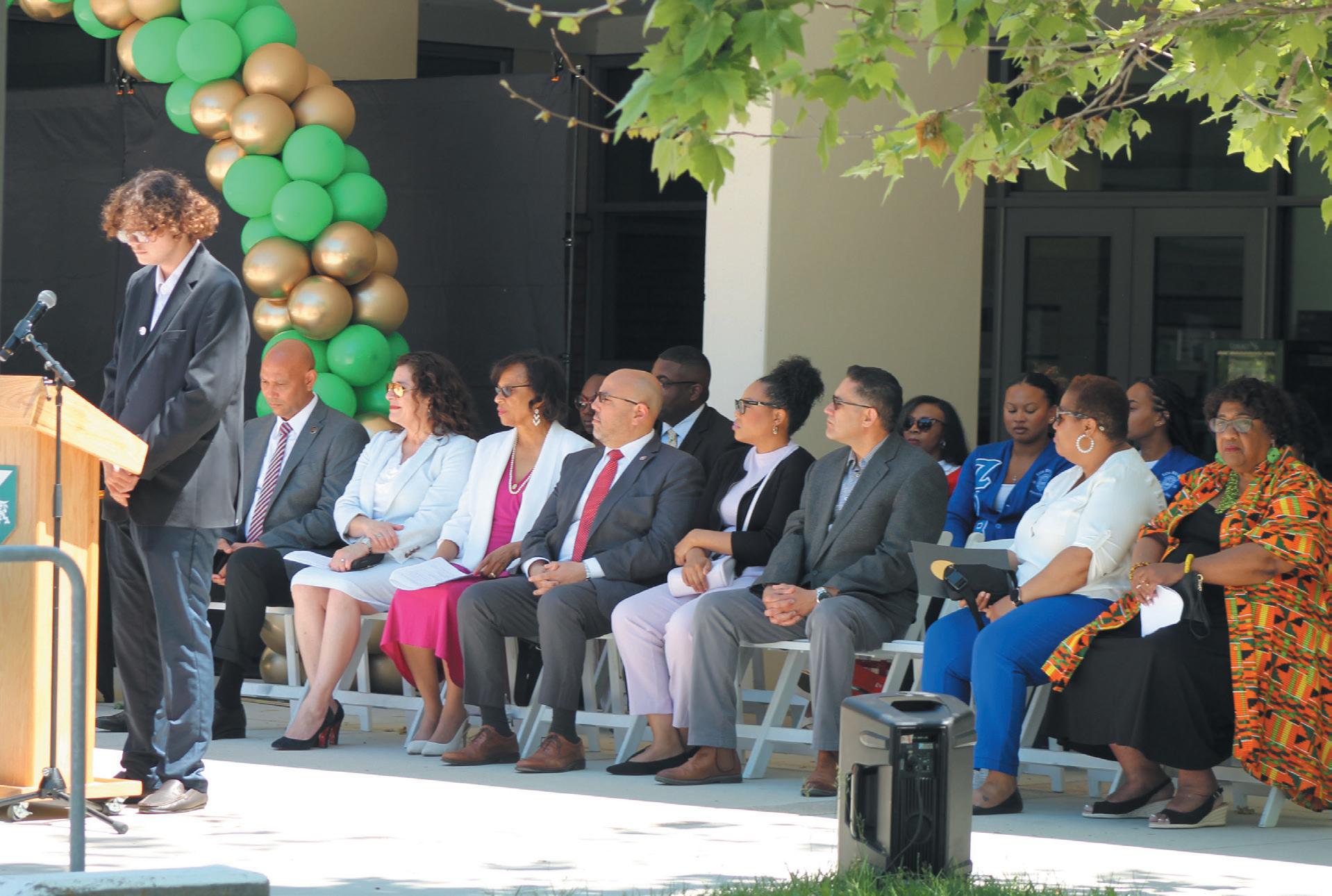




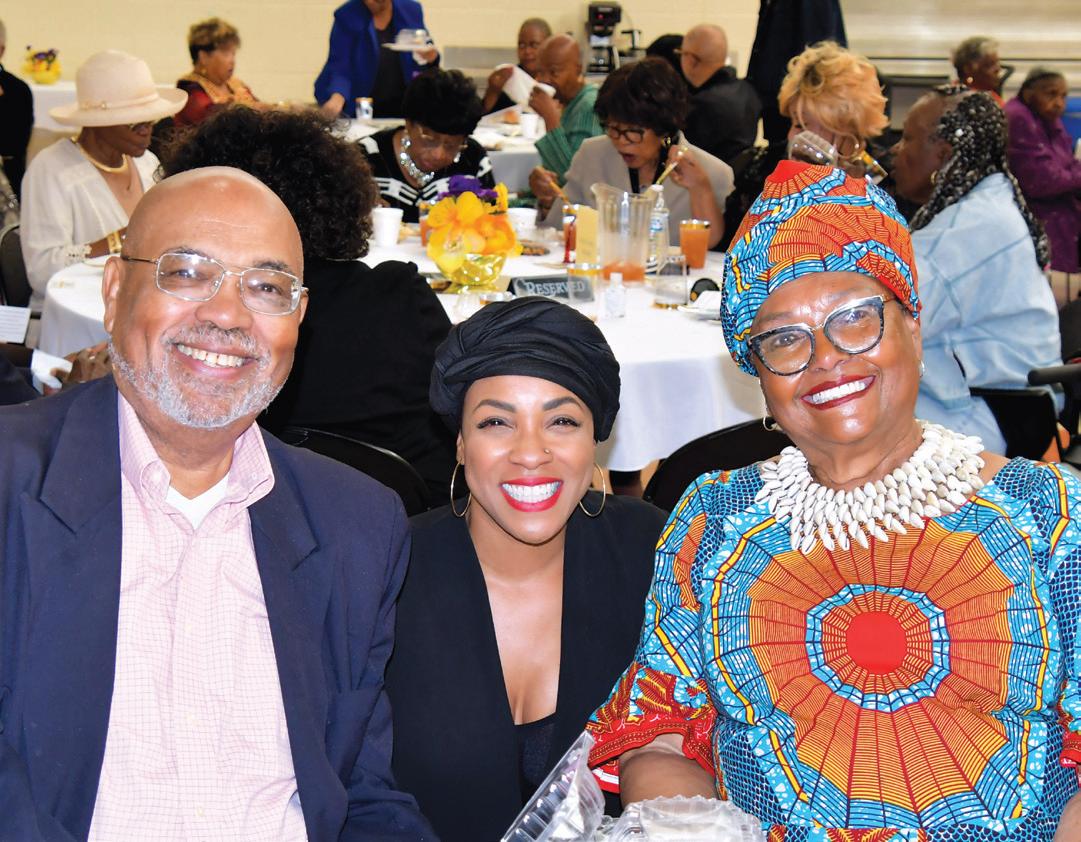
Over 150 festively attired Seasoned Seniors gathered at The George L. Stevens Senior Center Friday, May 17th for the 18th Annual Older Americans Month Luncheon. Storyteller Alyce Smith Cooper captured the essence of the celebration by carrying each guest on the “Spiritual Journey” our ancestors traveled to bring us to this point in time... On their Shoulders We Stand. Carmelia “Toot” Bell wowed the audience with a soulful and inspiring musical tribute.
In conjunction with this year’s National theme, “Powered By Connection”, the event focused on the Center’s vibrant programs and activities, and its Seasoned Ambassadors.

The following Seasoned Ambassadors received Certificates of Appreciation from the offices of Congressman Juan Vargas; 79th
CONTRIBUTING
Saturday the 18th was the date, Admiral Baker Park was the location, and kindness was the reason.
The Never Leave One Behind (NLOB) board members wanted to help four deserving high students as they continue their pursuit for
higher learning opportunities. The students’ complex journey got a much-needed and appreciated financial boost thanks to the Johnnie Lee Gibson One Thousand Dollar Scholarship award.
Da’nae Jones (Lincoln HS); Tori Guerin (Helix Charter); DeVeon Johnson (School of Performing Arts); and Meteo Cook (Lincoln HS) were this year’s thankful recipient’s.



“Everybody here has treated us with so much kindness. It’s amazing the support we have been getting. This is such a welcoming at mosphere, and I’m going to put the mon ey to good use,” Mateo Cook shared. Mateo is headed to the University of Pine Bluff in Arkansas.
Scholarship recipient Da’nae Jones, headed to Hampton University, said, “I think this was an awesome experience. It’s a beautiful way to honor Mr. Gibson, and a beautiful way of keeping his memory alive through


“Johnnie Gibson was really big on education and would love to support youngsters from the community. Putting this scholarship in his name is a way of honoring Johnnie aka Blue and supporting our kids,” NLOB President Larry Price shared.
“Remember, never look down on mankind unless you’re picking him up,” Price continued.
Scholarship recipients and knowledge seekers Davion Johnson and Tori Guerin were also thankful for NLOB’s generous endowment during their acceptance speeches. After two years at Mesa City College, DaVeon plans to enroll into the prestiges Juilliard School. Tori will be attending Tuskegee University, majoring in engineering.
The next generation of engineers, policymakers, problem solvers, civil rights activists, entertainers and critical thinkers were treated to a tasty BBQ lunch to go with their giant replica poster checks.

The Center’s Executive Director and Mistress of Ceremonies, Rosemary W. Pope, shared a thought-provoking reading of “The Gift of Aging” and challenged all guests to “Age Strong, Live Long.”
The Fourth District Seniors Resource



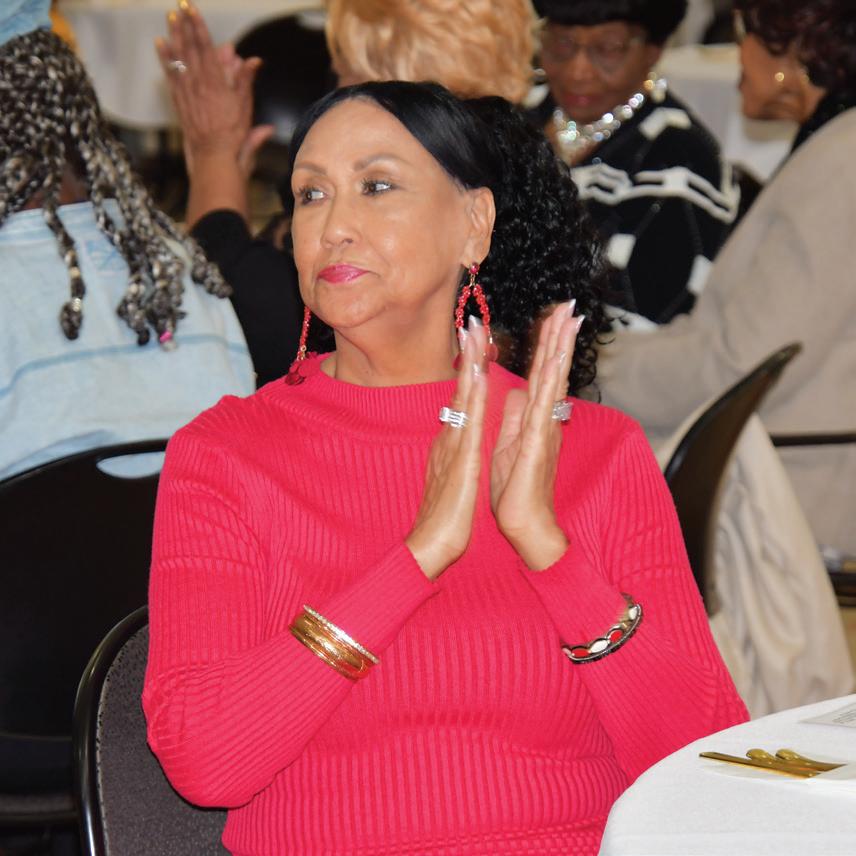


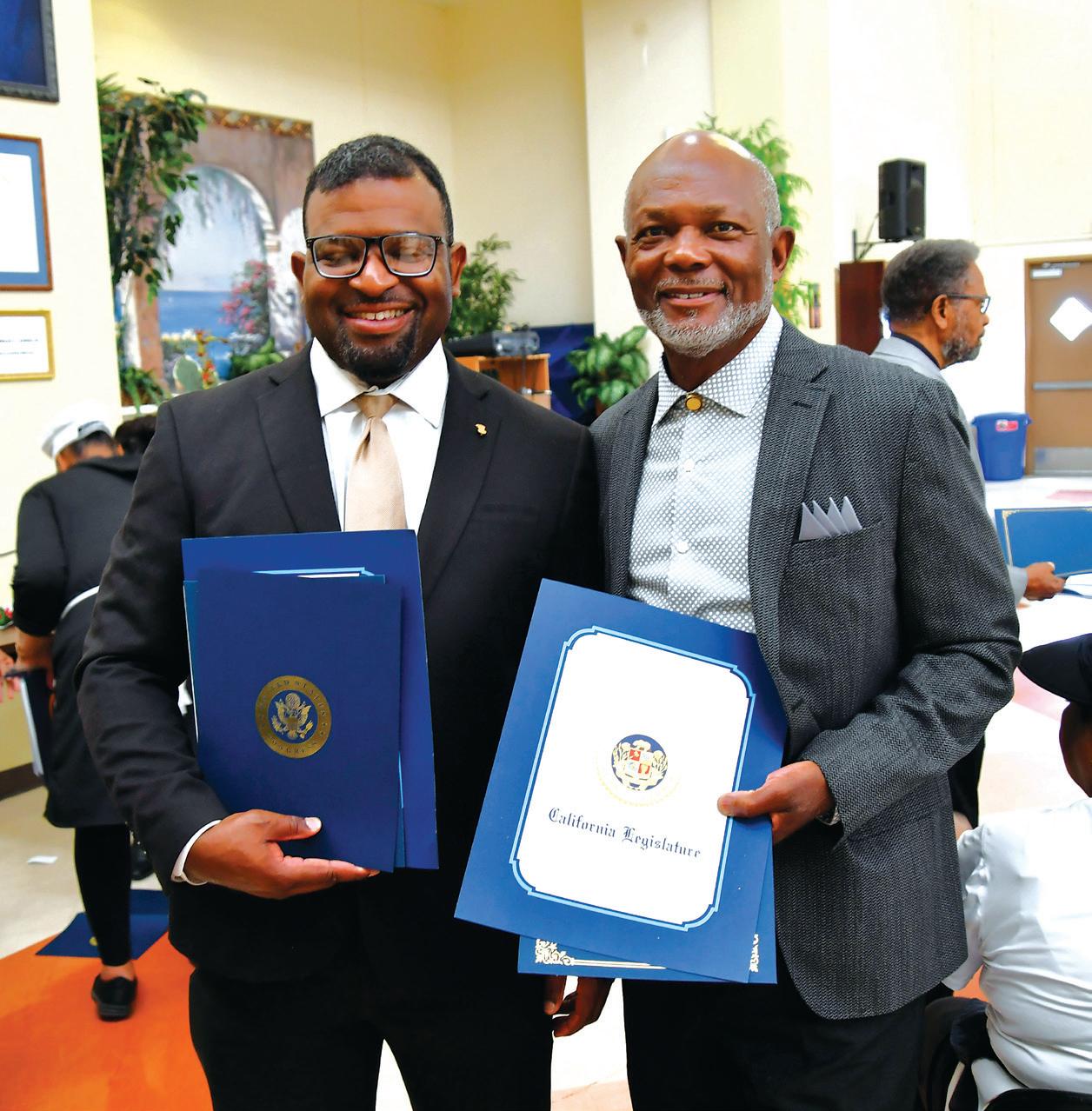




Diane Moss, through Project New Village, has led initiatives to address food insecurity in Southeastern San Diego by promoting food sovereignty, establishing community gardens, and launching a mobile farmers' market.
Her leadership has not only provided access to nutritious food but also fostered community wellness, economic resilience, and a sense of belonging by reconnecting individuals with their cultural food practices and promoting shared stewardship of local food systems.



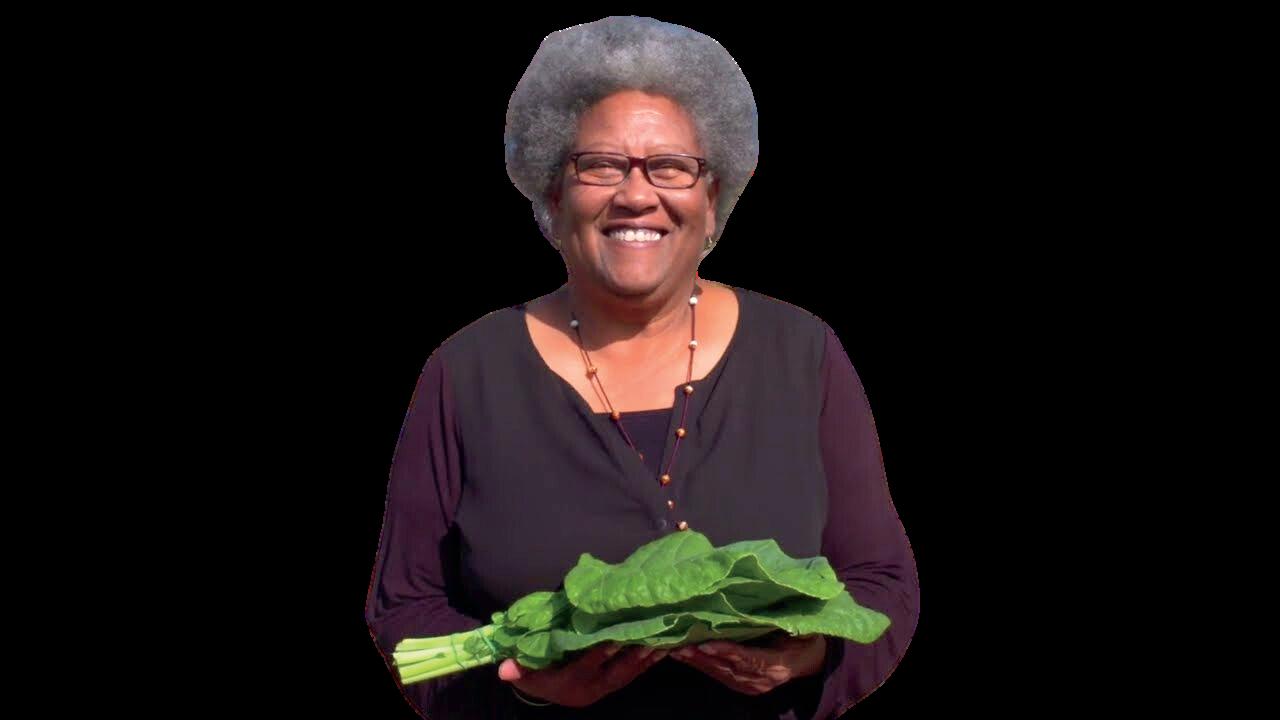
Afrofuturism and comic art collaborations are at the forefront of one of the newest exhibits in Balboa Park. On May 9th, the Comic-Con Museum debuted two of its newest exhibits at Wondercon highlighting Afrofuturism and Tijuana Comic Artists.
Among the artists was John Jennings, an Eisner Award-winning and New York Times best selling artist, Professor, former Harvard Fellow, and storyteller who has focused his efforts on publishing graphic novels and comics focused on representing people of color.
John's exhibition titled “Collaboration(s)! A Journey with John Jennings”, is vibrant, vast, and interactive which is a captivating treat for comic book aficionados. The exhibit features both books, and illustrations created by John Jennings as well as mixed media art featuring everyone from the infamous character Luke Cage, to author Octavia Butler. Jennings gave eye opening insight into how his career started, and where his passion for storytelling has taken him.
“I first discovered my love for comics from my mother. My mom was the one that turned me on to literature. She read a lot and she’s a big horror fan and we still talk about horror and action movies to this day. She’s very proud. She thought I was crazy at first but now she sees it. She got me my first comics and from there, I started trying to make them myself and I never stopped.” Jennings also gave context on why he selected particular pieces for the exhibit, and what Afrofuturism means to him personally.

“Comics are extremely intricate and they require a lot of different people to get them done from editors, to writers and colorists. It’s all about the community you build and the stories you tell. I think of Afrofuturism as a way of seeing. It’s about maintaining the history while you move forward. A lot of times people who work around science fiction and race have the added burden of protecting the past. Particularly now when our past is under siege. Everyone knows if you destroy someone’s history, you destroy their future”.
John Jennings has made many contributions to art by way of comic book illustrations, mixed media, and storytelling. He is also the co-founder of the Schomburg Black Comic Book Festival which is located in Harlem New York, and takes place annually each April to a crowd of over 15,000 attendees, making it the largest Black comic book festival in the United States.
If you’re interested in learning more about John and his new exhibition at Wondercon, stop by the Comic-Con Museum in Balboa Park.











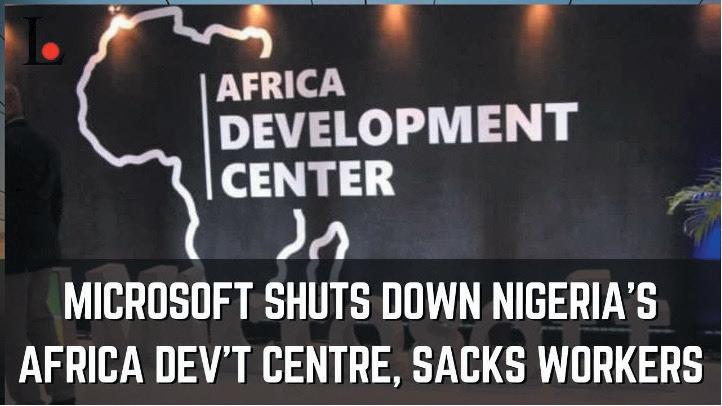
AM
icrosoft development center is shutting down in Lagos, where hundreds of employees had nursed high hopes for training opportunities and the prospect of a good job in the high-tech industry.
Just two years ago, Microsoft’s Development Center was opened with much fanfare. Here were the company’s first ever engineering offices in Africa – in Lagos and Nairobi. Some $70 million was invested in Kings Tower – a business icon in Ikoyi, Lagos. Two years later it was just a dream deferred. But why would the company so quickly pull the plug?
The answer was a muddle. “We will continue to operate in Nigeria, and we remain committed to Nigeria’s transformation objectives…As such we will continue to invest in our business and key growth areas in the region.”
In a telephone call with Bloomberg News, Microsoft explained that organizational and workforce adjustments were a necessary and regular part of managing their business. In addition, Nigeria had been battling a currency crisis, dollar shortages, and high inflation. Online figure Dare Obasanjo had heard rumors of layoffs at Microsoft in Nigeria “but I didn’t expect them to shut down the entire development center and lay off everyone.”
“It’s not surprising given the layoffs across the industry but it is disappointing.”
Government officials, however, were in total
denial. Temitope Ajaye, senior special assistant on Media and Publicity, refuted reports claiming that the Lagos center would be closed. In a statement via X, Ajayi called the shutdown “an incorrect media report.”
The organization was “re-aligning roles” within its business, he insisted, adding that “a few roles will certainly be impacted.” Into the vacuum came Labor Party presidential candidate Peter Obi, lamenting the shutdown.
“It underscores the need for comprehensive economic reforms in Nigeria… The closure of Microsoft’s innovation center represents yet another significant setback for Nigeria’s aspirations to become a hub for technology and innovation in Africa.”
The center had over 200 engineers, mainly Nigerians, who were producing “wave making digital solutions touted to have the capability of changing the African narrative.” However, it appears that vision may have been disrupted by the sudden closure, which officials have vehemently refused to explain beyond “organizational and workforce adjustments“.
Last month, Nigeria’s THISDAY publication, said they observed what appeared to look like a desolate area in the building housing the Microsoft Innovation Center in Lagos.
The entire seven floors of the building were without staff and the few staff members on duty were the front desk staff and security personnel that kept watch over the place.
The absence of staff was an indication that Microsoft may have taken the decision earlier to shut down the innovation center, according to them.
Kenya’s President William Ruto has declared Friday, May 10, a public holiday to mourn the 238 people who have died due to ongoing flooding.
change. Kenya, along with other parts of East Africa, have been overwhelmed by floods. More than 235,000 people are displaced and living in dozens of camps. President Ruto also announced the reopening of schools countrywide, after two weeks delay due to heavy rains that have destroyed hundreds of schools.

In a shocking development, dozens of Uganda’s high placed ministers and legislators have been accused of stealing from the poor communities they serve in a sprawling scandal that has outraged graftweary citizens. Sanctions imposed by Uganda’s AntiCorruption Court target Parliament Speaker Anita Annet Among as well as Amos Lugoloobi, state minister for finance in charge of planning, former ministers Mary Goretti Kitutu and Agnes Nandutu, a former barmaid and journalist who reportedly turned herself into police.

The stolen iron sheets were from a Ugandan government-funded project to house those in Karamoja, which the United Nations Population Fund said is not only one of Ugandan's poorest regions but one of the poorest regions in the world with 61% of its population living in "absolute poverty."
The president on Wednesday, May 8, said the day will be observed by national tree planting activities to help mitigate the effects of climate
The government had said more than 1,000 schools were affected by the heavy rains and flooding and set aside funds for renovations.The metrology department in its daily weather forecast has continued to predict moderate to heavy rainfall in most parts of the country. The government is in the process of forcefully evacuating people living in flood prone areas and those near rivers and dams as water levels in the country’s major hydroelectric dams rise to “historic levels”.
Two weeks ago, the government bulldozed houses in informal settlements of Mathare and Mukuru in the capital Nairobi and the president promised evicted families the equivalent of $75 to relocate after a deadline passed to evacuate amid deadly rains.
‘We have known government officials to steal billions of shillings, not stealing iron sheets from the poor.’
—Marlon AgabaIn the case of Lugoloobi, the newspaper published a photo of what it said was the minister’s goat shed roofed with government property. Official corruption is rampant in this East African country, but officials caught in major scandals rarely face criminal charges.
“The charges are highly welcome as we have been having a culture of impunity because (the suspects) have godfathers in the system," said Marlon Agaba, executive director of the pressure group Anti-Corruption Coalition Uganda. “We have known government officials to steal billions of shillings, not stealing iron sheets from the poor.”
Some 26 ministers and 31 legislators have been named in connection with the case. President Yoweri Museveni, often accused of lacking the political will to stem corruption, has now ordered detectives to investigate the case.
"This is unprecedented in the history of the National Resistance Movement administration," said Ofwono Opondo, a government spokesman.
The scandal came to light when the local New Vision newspaper reported that security officials in eastern Uganda had intercepted government branded iron sheets being sold by relatives of Kitutu, the minister in charge of Karamoja.
"The actions of these individuals, in taking aid from those who need it most, and keeping the proceeds, is corruption at its worst and has no place in society," Deputy Foreign Secretary Andrew Mitchell of Britain said in a statement.
"The Ugandan courts are rightly taking action to crack down on those politicians who seek to line their own pockets at their constituents' expense."
Sanctions also imposed by Britain include asset freezes and travel bans. They are the first Britain has imposed against individuals in Uganda under its Global Anti-Corruption Sanctions regime that was introduced in April 2021.
Uganda's Parliament has so far rejected the charges against its speaker, stating Among was being punished over her support for the East African nation's anti-gay legislation.
"The Iron sheets have been used as a ruse to conceal the real, unstated but clearly obvious reason for the sanctions -- which is the. speaker's stance on the recently enacted Anti-Homosexuality Act," Chris Obore, director of communication and public affairs, charged.
Uganda recently enacted an Anti-Homosexuality Act of 2023, which penalizes consensual same-sex activity with up to life in prison. Since the rule was first announced last year, it has attracted international condemnation.
A total of 42 people and entities have been blacklisted by Britain under its new corruption-targeting sanctioning powers. Sanctions were also announced by the U.S. including visa restrictions and reduced support for the government on the grounds that it is a violation of universal human rights.
Continued from page 5
CNN said that its debate would be held at 9 p.m. ET in its Atlanta studios with no audience present in a break from recent precedent. Moderators will be anchors Jake Tapper and Dana Bash, CNN said. ABC did not offer details on where its event would be held, but the network said it would be moderated by anchors David Muir and Linsey Davis. Disagreements about moderators and rules were some of the questions that prompted the formation of the Commission on Presidential Debates in 1987.
Biden's campaign had proposed excluding third-party candidates, such as Robert F. Kennedy Jr., from the debates outright. Under the debate commission’s rules, Kennedy or other third-party candidates could qualify if they secured ballot access sufficient to claim 270 Electoral Votes and polled at 15% or higher in a selection of national surveys.
Both CNN and ABC announced the same qualification threshold, saying candidates will need to reach at least 15% in four separate national polls of registered or likely voters that meet their standards.
The debates will be the first televised gen -
eral election matchups to be hosted by individual networks. The 1960 debates, which helped show the power of the medium to influence public opinion, were hosted jointly by the leading networks of the day. Before the commission was formed in 1987, the presidential debates of 1976, 1980 and 1984 were organized by the League of Women Voters.
Plans for a vice presidential debate have yet to be announced.
In a memorandum to Biden campaign chair Jen O’Malley Dillon on Wednesday, Trump senior campaign advisers Chris LaCivita and Susie Wiles challenged Biden to agree to at least two additional debates, suggesting one be held each month, with events in June, July, August and September, in addition to a vice presidential debate.
The commission said in a Wednesday statement, “The American public deserves substantive debates from the leading candidates for president and vice president." It said its mission is “to ensure that such debates reliably take place and reach the widest television, radio and streaming audience.
Take a brief meditation break. It’s simple: Sit quietly, close your eyes, and focus on your breathing. When you get distracted, just bring your attention back to your breath. When you’re done, you could feel more positive and patient. That’s just what you need to shift the energy of your day and help you bounce back from stress.
Get Outside
Step outdoors for a few minutes to pull some weeds, sit in the sunshine, or just get some fresh air. Research shows that time outside can give you more energy, a better memory, and less anxiety. Even if you’re in a city, notice trees, flowers, and parks. Soak up nature to give yourself a boost.
Have a Laugh
Read a few pages of a funny book, watch a clip of your favorite comedian, or call a friend who always cracks you up. Laughter obviously lightens your mood, plus it stimulates your heart, lungs, and muscles. It makes your brain release more feel-good endorphins. And it can relax your muscles and help your circulation.
Count What’s Good
Pick up a pen and list at least a few things you’re grateful for today. Think about your relationships, things that went well, and any positive parts of your life — big or small. People who do this feel better and are less bothered by stress. And it can take very little time to do.
Wish Someone Well
Practicing compassion for others tends to make you feel better, too. Choose someone: a friend, family member, co-worker, or even a stranger. In your mind, send them wishes to be happy and healthy and live with ease. This quick exercise can make you more satisfied with your own life.
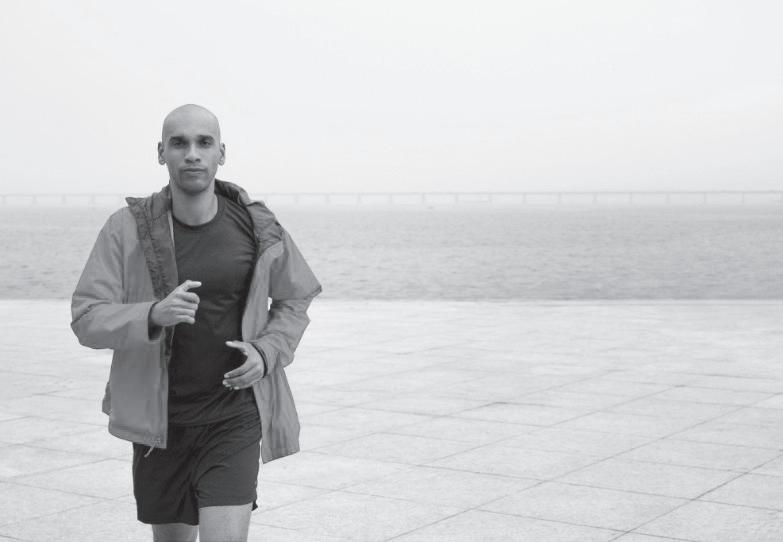
Take a Walk
Lace up your shoes. A stroll around the neighborhood can lift your mood and bust stress. Stuck in a rut? Research shows your next big idea could be just a walk away. It can boost creative thinking.
Turn on Some Tunes
DJ, put on something peppy! Play a few of your favorite songs to relax and lighten your mood. Research shows music has all kinds of benefits — it can reduce anxiety and pain. If you feel moved to get up and dance, even better.
Check a Chore Off Your List
What small task has been lurking in the back of your mind for too long? Change that burned-out light bulb, return that email, make that appointment. The satisfaction of getting something small done could stop stress and
give you the momentum to tackle more.
Connect
Call a friend to catch up, email a family member to check in, or text a colleague to meet you for coffee. Making contact with other people builds social connections and gives you more support. Studies support this: Better relationships are one of the best ways to become happier.
Eat a Smart Snack
Fuel up, but keep it healthy and simple. Some ideas:
Oranges. Citrus fruits are high in vitamin C, which is good for your immune system.
Nuts. Enjoy a small handful of walnuts, almonds, or pistachios for some omega3 fatty acids that even out your stress hormones.
Whole grains. A bowl of oatmeal or a piece of whole wheat toast could help your brain make more serotonin, which can improve your mood.
Do a Good Deed
Open a door for someone. Donate to a cause you believe in. Sign up for a volunteer project. Help a family member with a small task. Studies prove that when you show kindness to other people, it makes you feel good. And it can be quick to do, any day of the week.
Stretch Yourself
Reach for your toes! Take a short break to gently stretch your neck, shoulders, lower back, thighs, and hips. Try yoga moves, like downward dog, mountain pose, or cat-cow. When you stretch, it lowers stress and sends extra blood to your muscles.
Hug It Out
Find a friend or family member and ask for a hug. That warm squeeze will give you a lift — and could even make conflict less upsetting, according to one study. Hugging could also help your immune system, another study says.
Give Yourself a Pep Talk
“I can handle this.” Practice positive self-talk. Try to reverse any negative thoughts you have. If you’re worried about a mistake you made, tell yourself, “Everyone messes up. I can fix it.” Say a few upbeat mantras to yourself out loud — it can change your thinking and cut your stress.
Write a Thank You Note
Jot down a few words of appreciation to someone who has helped you. You can express thanks for recent favors, birthday gifts, or long-lasting support. One study showed people who did this actually trained themselves to be more grateful.
This article first appeared on Inland Valley News.
 By
By
Hailed as cutting-edge technology that will revolutionize teaching, next-generation artificial intelligence is coming to a classroom near you — if it hasn’t already arrived. Advocates say computer programs and algorithms can help educators with everything from lesson plans to absenteeism, and can even spot students who are using AI to cheat.
But the approaching AI wave in middle- and high-school education could swamp Black students.
Experts say the increasing adoption of AI tools threatens to worsen long-standing race and equity issues — including racial bias in lessons and grading, the over-disciplining of Black boys, the continued under-resourcing of majority-minority schools and the “digital divide” between Black students and their white peers.
Yet as increasingly advanced machine-learning technology becomes more widespread, analysts say, school administrators and elect -
ed officials are behind the curve in crafting policies and standards for AI in the classroom that would ensure equity and protect Black students.
‘We already know about the bias issues with AI,” says Victor Lee, an associate professor at Stanford University Graduate School of Education. The risk for technologicallyinduced bias, Lee says, “is quite high for schools to jump in too quickly.”
But surveys have indicated 1 in 4 educators plan to increase the use of AI in their classrooms — a data point, he says, that indicates the technology is “rapidly advancing on a scale we are not prepared for.”
Education experts, including Matthew Lynch, point to multiple ways artificial intelligence is already relieving teachers of essential but burdensome tasks: grading papers, crafting lesson plans, and taking attendance. In other classrooms, AI programs analyze homework and tests to help teachers identify struggling students — and then put together a tailored plan to tutor them. And some school administrators are using facial recognition technol-
ogy to identify and discipline students.
However, research has shown that racial bias is often baked into artificial intelligence programs, lessons, and tutoring systems because they reflect the biases and blind spots of their designers — and the tech industry is predominantly white. Although Black Americans comprise approximately 13% of all workers, they make up only 7.4% of digital workers, according to a 2023 report by McKinsey & Co.
When tech companies build products for schools, they join forces with affluent, mostly-white schools or rely on their own educational experience, she said. Their design -
ers, she says, usually don’t consider or struggle to imagine the needs or experiences of under-resourced schools and Black students.
That means AI classroom modules that shortchange Black history, or don’t take into consideration cultural differences in tutoring lessons or tests, experts say. Over-reliance on software programs in schools, they say, could misidentify struggling students, fail to process cultural references in an essay, or point to problems that don’t exist.
Before schools and teachers go all-in on AI technology, he says, tough questions must be asked: “Are we thinking critically about this? Is the student prepared for the world?”

According to the Centers for Disease Control, as of May 14, 2024, the SARSCoV-2 Omicron variants JN.1 and a JN.1 descendant, KP.2, have high prevalence in the United States. CDC Nowcast projections estimate KP.2 (also called JN.1.11.1.2), to account for nearly 30% of new COVID-
19 illnesses in the U.S. The proportion of illnesses caused by KP.2 is rapidly increasing, from 3.9% estimated during the week of March 30 to 28.2% estimated during the week of May 11, 2024.
Pictured above is a figure showing recent emergence of JN.1, KP.2, and other Omicron strains in the U.S.

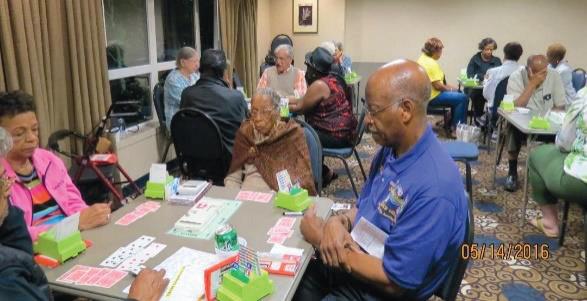










5/23, 5/30, 6/6, 6/13
FICTITIOUS BUSINESS NAME STATEMENT 2024-9009212
Fictitious business name(s): Sayaka Tea Located at: 6353 El Cajon Blvd. STE 134 San Diego, CA 92115 County of San Diego
This business is conducted by: An Individual Registrant has not yet begun to transact business under the name(s) above
This business is hereby registered by the following: Tina Sakasegawa 6353 El Cajon Blvd. STE 134 San Diego, CA 92115
This statement was filed with the Recorder/County Clerk of San Diego County on April 29, 2024
This fictitious business name will expire on April 29, 2029 5/23, 5/30, 6/6, 6/13
FICTITIOUS BUSINESS NAME STATEMENT 2024-9010216
Fictitious business name(s): Starlight Liberation Therapy Located at: 3424 47th St. San Diego, CA 92105 County of San Diego
This business is conducted by: An Individual Registrant has not yet begun to transact business under the name(s) above
This business is hereby registered by the following: Andina Aste-Nieto 3424 47th St. San Diego, CA 92105
This statement was filed with the Recorder/County Clerk of San Diego County on May 13, 2024
This fictitious business name will expire on May 13, 2029 5/23, 5/30, 6/6, 6/13
FICTITIOUS BUSINESS NAME STATEMENT 2024-9010442
Fictitious business name(s): Bright Care Home Located at: 6334 Varney Dr. San Diego, CA 92114
County of San Diego
This business is conducted by: A Limited Liability Company
The first day of business was: 02/28/2024
This business is hereby registered by the following: Bright Care Residential LLC 4113 Mandarin Terrace San Diego, CA 92115
This statement was filed with the Recorder/County Clerk of San Diego County on May 15, 2024
This fictitious business name will expire on May 15, 2029 5/23, 5/30, 6/6, 6/13
FICTITIOUS BUSINESS NAME STATEMENT 2024-9010014
Fictitious business name(s): MAC Services Located at: 4189 Rolando Blvd. STE #C San Diego, CA 92115 County of San Diego
6226 Romo St. San Diego, CA 92115 County of San Diego
This business is conducted by: An Individual
The first day of business was: 04/01/2024
This business is hereby registered by the following: Mouhamed Chahin
Romo
Consulting Located at: 1820 Beta St National City, CA 91950 County of San Diego
This business is conducted by:
A Limited Liability Company
The first day of business was: 04/01/2021
This business is hereby registered by the following: Quincey And Associates Global LLC 1820 Beta St National City, CA 91950 State of Incorporation/ Organization: California
This statement was filed with the Recorder/County Clerk of San Diego County on May 06, 2024
This fictitious business name will expire on May 06, 2029 5/16, 5/23, 5/30, 6/6
FICTITIOUS BUSINESS NAME STATEMENT 2024-9009805
Fictitious business name(s): Sebek Products & Services LLC Located at: 264 Elvado Way San Diego, CA 92114 County of San Diego
This business is conducted by:
A Limited Liability Company
Registrant has not yet begun to transact business under the name(s) above This business is hereby registered by the following: Sebek Products & Services LLC 264 Elvado Way San Diego, CA 92114
This statement was filed with the Recorder/County Clerk of San Diego County on May 07, 2024
This fictitious business name will expire on May 07, 2029 5/16, 5/23, 5/30, 6/6
FICTITIOUS BUSINESS NAME STATEMENT 2024-9007619
Fictitious business name(s): Deebone Productions Located at: 2675 Balboa Vista Dr. San Diego, CA 92105 County of San Diego PO Box 152286 San Diego, CA 92195-2286 County of San Diego
This business is conducted by:
An Individual
The first day of business was: 01/01/2004
This business is hereby registered by the following: Donna Jean Brooks PO Box 152286 San Diego, CA 92195-2286
This statement was filed with the Recorder/County Clerk of San Diego County on April 08, 2024
This fictitious business name will expire on April 08, 2029 5/16, 5/23, 5/30, 6/6
FICTITIOUS BUSINESS NAME STATEMENT 2024-9009072
Fictitious business name(s): Peaceful Pathways
Therapy Located at: 6977 Navajo Road #1010 San Diego, CA 92119 County of San Diego
This business is conducted by:
An Individual Registrant has not yet begun to transact business under the name(s) above
This business is hereby registered by the following: Jacqueline Michelle Hazel 6977 Navajo Road #1010 San Diego, CA 92119
This statement was filed with the Recorder/County Clerk of San Diego County on April 26, 2024
This fictitious business name will expire on April 26, 2029 5/9, 5/16, 5/23, 5/30
FICTITIOUS BUSINESS NAME STATEMENT 2024-9008444
Fictitious business name(s): The White Flower Bridal Boutique The White Flower
Located at: 2121 5th Ave. STE 100 San Diego, CA 92101 County of San Diego This business is conducted by: A Corporation
The first day of business was: 09/25/2019 This business is hereby registered by the following: TWF Bridal 2121 5th Ave. STE 100 San Diego, CA 92101 County of San Diego
This statement was filed with the Recorder/County Clerk of San Diego County on April 18, 2024
This fictitious business name will expire on April 18, 2029 5/9, 5/16, 5/23, 5/30
FICTITIOUS BUSINESS NAME STATEMENT 2024-9009672
Fictitious business name(s): Sushi Kuchi PB Located at: 4475 Mission Blvd #C San Diego, CA 92109
County of San Diego
This business is conducted by:
A Corporation
The first day of business was: 10/24/2016 This business is hereby registered by the following: YSE Group INC 4475 Mission Blvd #C San Diego, CA 92109
State of Incorporation/ Organization: California
This statement was filed with the Recorder/County Clerk of San Diego County on May 06, 2024
This fictitious business name will expire on May 06, 2029 5/9, 5/16, 5/23, 5/30
FICTITIOUS BUSINESS NAME STATEMENT 2024-9009664
Fictitious business name(s): Sushi Kuchi Convoy Located at: 4637 Convoy St. STE 104 San Diego, CA 92111
County of San Diego
This business is conducted by:
A Corporation
The first day of business was: 10/19/2017
This business is hereby registered by the following: Bbodagu Corp 4637 Convoy St. STE 104 San Diego, CA 92111
State of Incorporation/ Organization: California
This statement was filed with the Recorder/County Clerk of San Diego County on May 06, 2024
This fictitious business name will expire on May 06, 2029 5/9, 5/16, 5/23, 5/30
FICTITIOUS BUSINESS NAME STATEMENT 2024-9009427
Fictitious business name(s): Cami Oura Creative Located at: 3887 Pell Pl. Unit 330 San Diego, CA 92130 County of San Diego PO Box 114 Del Mar Del Mar, CA 92014 County of San Diego
This business is conducted by: An Individual Registrant has not yet begun to transact business under the name(s) above This business is hereby registered by the following: Camila Ogawa PO Box 114 Del Mar Del Mar, CA 92014
This statement was filed with the Recorder/County Clerk of San Diego County on May 01, 2024
This fictitious business name will expire on May 01, 2029 5/9, 5/16, 5/23, 5/30
FICTITIOUS BUSINESS NAME STATEMENT 2024-9009454
Fictitious business name(s): Clark Brothers Transport Co.
RC Investment Company Located at: 2370 Balboa Vista Dr.
San Diego, CA 92105
County of San Diego PO Box 152621
San Diego, CA 92195
County of San Diego
This business is conducted by:
A Corporation
The first day of business was: 05/01/2024
This business is hereby registered by the following: SDCC Investments Corp. 2370 Balboa Vista Dr. San Diego, CA 92105
This statement was filed with the Recorder/County Clerk of San Diego County on May 02, 2024
This fictitious business name will expire on May 02, 2029 5/9, 5/16, 5/23, 5/30
FICTITIOUS BUSINESS
NAME STATEMENT 2024-9009220
Fictitious business name(s): Khachapuri Located at: 4505 Park Blvd. San Diego, CA 92116 County of San Diego 4656 Hawley Blvd. San Diego, CA 92116
County of San Diego
This business is conducted by:
A Limited Liability Company
Registrant has not yet begun to transact business under the name(s) above
This business is hereby registered by the following: Khachapuri LLC. 4656 Hawley Blvd. San Diego, CA 92116
This statement was filed with the Recorder/County Clerk of San Diego County on April 29, 2024
This fictitious business name will expire on April 29, 2029 5/9, 5/16, 5/23, 5/30
FICTITIOUS BUSINESS NAME STATEMENT 2024-9009496
Fictitious business name(s): Hispanic Translation Services Located at: 3855 Avocado Bl. STE. 120 La Mesa, CA 91941 County of San Diego
9939 Jacoby Rd. Spring Valley, CA 91977 County of San Diego
This business is conducted by:
An Individual
The first day of business was: 05/01/2024
This business is hereby registered by the following: Laura Ocampo 9939 Jacoby Rd. Spring Valley, CA 91977
This statement was filed with the Recorder/County Clerk of San Diego County on May 02, 2024
This fictitious business name will expire on May 02, 2029 5/9, 5/16, 5/23, 5/30
FICTITIOUS BUSINESS
NAME STATEMENT 2024-9009414
Fictitious business name(s): Apsara's KhmerCambodia Food
Located at:
737 South Citrus Ave
Escondido, CA 92027
County of San Diego
This business is conducted by: An Individual Registrant has not yet begun to transact business under the name(s) above
This business is hereby registered by the following: Sara Srin Kim Chhengto 737 South Citrus Ave Escondido, CA 92027
This statement was filed with the Recorder/County Clerk of San Diego County on May 01, 2024
This fictitious business name will expire on May 01, 2029 5/9, 5/16, 5/23, 5/30
FICTITIOUS BUSINESS NAME STATEMENT 2024-9007542
Fictitious business name(s): Video-RX Located at: 715 North Rios Avenue Solana Beach, CA 92075-1249

FICTITIOUS BUSINESS NAME STATEMENT 2024-9007993
Fictitious business name(s): Communal Sustainability Located at: 3045 A St. San Diego, CA 92102 County of San Diego
This business is conducted by: An Individual The first day of business was: 04/12/2024 This business is hereby registered by the following: Emily Ann Busam 3045 A St. San Diego, CA 92102 This statement was filed with the Recorder/County Clerk of San Diego County on April 12, 2024 This fictitious business name will expire on April 12, 2029
Deborah Hosein
PROPOSED NAME: Deborah Mary Claret Hosein
THE COURT ORDERS that all persons interested in this matter appear before this court at the hearing indicated below to show cause, if any, why the petition for change of name should not be granted. Any person objecting to the name changes described above must file a written objection that includes the reasons for the objection at least two court days before the matter is scheduled to be heard and must appear at the hearing to show cause why the petition should not be granted. If no written objection is timely filed, the court may grant the petition without a hearing.
NOTICE OF HEARING
Date: July 17, 2024
Time: 8:30 A.M. Dept. 61
(To appear remotely, check in advance of the hearing for information about how to do so on the court's website. To find your court's website go to www.courts.ca.gov/find-mycourt.htm)
NO HEARING WILL OCCUR ON THE DATE SPECIFIED IN THE ORDER TO SHOW CAUSE.
The court will review the documents filed as of the date specified on the Order to Show Cause for Change of Name (JC Form #NC-120).
If all requirements for a name change have been met as of the date specified, and no timely written objection has been received (required at least two court days before the date specified), the Petition for Change of Name (JC Form #NC-100) will be granted without a hearing. One copy of the Order Granting the Petition will be mailed to the petitioner.
To change a name on a legal document, including a birth certificate, social security card, driver license, passport, and other identification, a certified copy of Decree
Changing Name (JC Form #NC-130) or Decree
Changing Name and Order Recognizing Change of Gender and for Issuance of New Birth Certificate (JC Form #NC-230) may be required. Contact the agency(ies) who issue the legal document that needs to be changed, to determine if a certified copy is required.
A certified copy of Decree
Changing Name (JC Form #NC-130) or Decree Changing Name and Order Recognizing Change of Gender and for Issuance of New Birth Certificate (JC Form #NC-230) may be obtained from the Civil Business Office for a fee. Petitioners who are seeking a change of name under the Safe at Home program may contact the assigned department for the information on obtaining certified copies.
If all the requirements have not been met as of the date specified, the court will mail the petitioner a written order with further directions.
If a timely objection is filed, the court will set a hearing date and contact the parties by mail with further directions.
A RESPONDENT OBJECTING TO THE NAME CHANGE MUST FILE A WRITTEN OBJECTION AT LEAST TWO COURT DAYS (excluding weekends and holidays) BEFORE THE DATE SPECIFIED. Do not come to court on the specified date. The court will notify the parties by mail of a future hearing date
Any Petition for the name change of a minor that is signed by only one parent must have this Attachment served along with the Petition and Order to Show Cause, on the other nonsigning parent, and proof of service must be filed with the court.
The address of

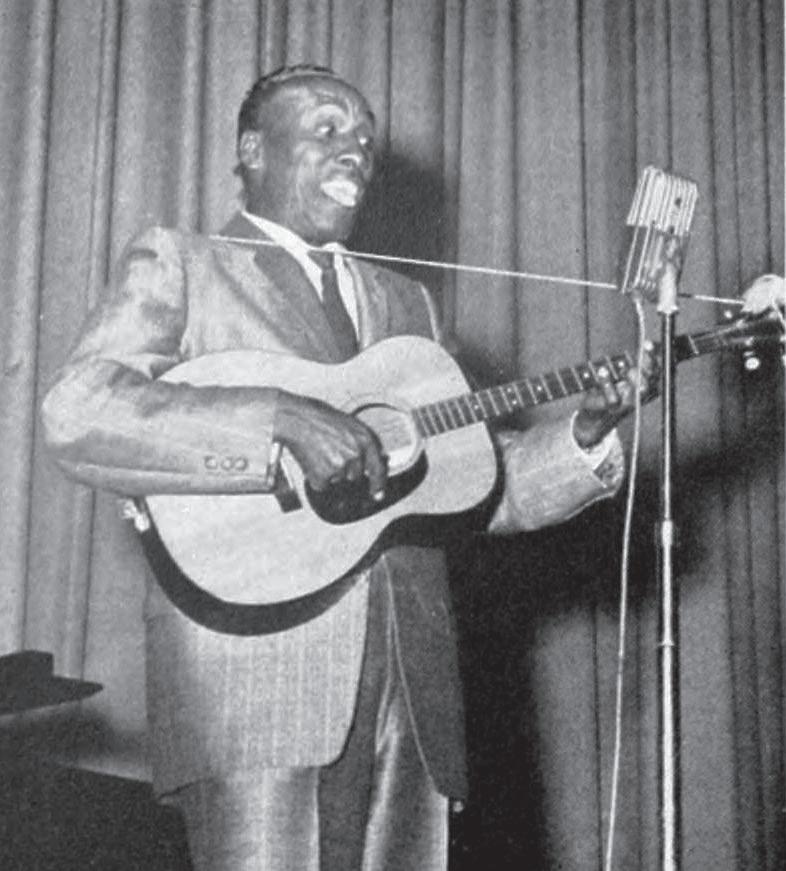
Benjamin Sherman “Scatman” Crothers, born on May 23, 1910, was an American actor and musician. He sang and was self-educated on guitar and drums. He is known for playing Louie the Garbage Man on the TV show Chico and the Man, and Dick Hallorann in Stanley Kubrick’s The Shining (1980). He was also a prolific voice-over actor who provided the voices of Meadowlark Lemon in the Harlem Globetrotters animated TV series, Jazz the Autobot in The Transformers and The Transformers: The Movie (1986), the title character in Hong Kong Phooey, and Scat Cat in the animated film The Aristocats (1970). On November 22, 1986, Crothers died at age 76 at his home in Van Nuys, California after struggling with lung cancer for nearly four years. He is buried at Forest Lawn Memorial Park Cemetery in Los Angeles.

Marvin Hagler, born on May 23, 1954, was an American boxer, who began his boxing career in Brockton, Massachusetts, winning 57 amateur fights and the 1973 Amateur Athletic Union middleweight title before turning professional.

In his first title fight, in 1979, he boxed world middleweight champion Vito Antuofermo to a 15-round draw. On September 27, 1980, in his 54th professional fight, Hagler took the world title from Alan Minter with a third-round knockout. Hagler went on to defend the title 12 times from 1981 through 1986.
After his retirement, Hagler moved to Italy, where he began an acting career. He was inducted into the International Boxing Hall of Fame in 1993.
Jackie “Moms” Mabley found fame and fortune as a stand-up comedian during the twentieth century.
During the early 1930s, Mabley established herself as a stage performer. By the end of the decade, she became the first female comedian to perform at the Apollo Theater. By the early 1960s, she began to build a white audience with her 1962 performance at Carnegie Hall, then a series of appearances on mainstream television shows including “The Smothers Brothers Comedy Hour” and “The Ed Sullivan Show.
On May 23, 1975, Mabley passed away following a heart attack in White Plains, New York. Later that year, she was inducted into the Apollo Walk of Fame, marking the first time non-musical artists were bestowed with the honor.
Continued from page 2
Dwight’s fellow passengers included venture capitalist Mason Angel, French craft brewery founder Sylvain Chiron, entrepreneur Kenneth Hess, aviator Gopi Thotakura, and retired accountant Carol Schaller. Together, they experienced a brief but transformative journey as the rocket ascended over 347,000 feet, crossing the Kármán line, the internationally recognized boundary of space. After a few moments of weightlessness, the New Shepard booster landed smoothly near the launch site, with the crew capsule following under two of its three parachutes.
Emerging from the capsule, Dwight expressed his elation, shaking his fists in triumph. “Fantastic! A life-changing experience. Everyone needs to do this!” he exclaimed.
Reflecting on the experience, he added, “I didn’t know I needed this in my life, but now I need it in my life.”
In the 1960s, Dwight, then an Air Force captain, was fast-tracked for space flight following President John F. Kennedy’s call for a Black astronaut. Despite his top-half graduation from
a prestigious test pilot school, he was passed over for astronaut selection. His autobiography, “Soaring On The Wings Of A Dream: The Untold Story of America’s First Black Astronaut Candidate,” recounts that challenging period.
Following his Air Force tenure, Dwight became a celebrated sculptor, specializing in depictions of historic African American figures. “I’ve got bragging rights now,” Dwight told NPR postlaunch. “All these years, I’ve been called an astronaut, but now I have a little [astronaut] pin, which is a totally different matter.”
Recalling the flight, Dwight remarked on the pronounced curvature of the Earth at their altitude. “That line between the atmosphere and space—it was like somebody pulled the curtains down over the windows.”
Born in 1933 on the outskirts of Kansas City, Kansas, Dwight grew up under the guidance of his mother, Georgia Baker Dwight, who instilled in him the belief that he could achieve anything. An avid reader and talented artist, Dwight pursued an aviation career, joining the United States Air Force in 1953 and earning a degree in Aeronautical Engineering from Arizona State University.
Selected as the first Negro astronaut trainee in 1962, Dwight’s journey was marred by discrimination and political setbacks, leading to his resignation in 1966. Transitioning to a career in art, Dwight received a Master of Fine Arts and established himself as a renowned sculptor. His works, including monuments to the Underground Railroad and memorials to Dr. Martin Luther King Jr. and George Washington Williams, have earned a permanent place in American cultural history.
When asked what he’d like to do for an encore, Dwight told NPR he’d like a second trip into space. “I want to go around the Earth and see the whole Earth,” he proclaimed. “That’s what I want to do now.”
VOICE & VIEWPOINT EDITOR’S NOTE: Ed Dwight’s magnificent work has a local connection: His sculpture of Malcolm X can be found in the lobby of our local Malcolm X Library, located on the corner of Market Street and Euclid Avenue. His “Bridge Street to Freedom” sculpture also adorns the nationally registered Huntoon - Van Rensalier Underground Railroad Memorial Foundation Site in Patterson, New Jersey, of which Mrs. Dolores Van Rensalier-Warren is president and founder.

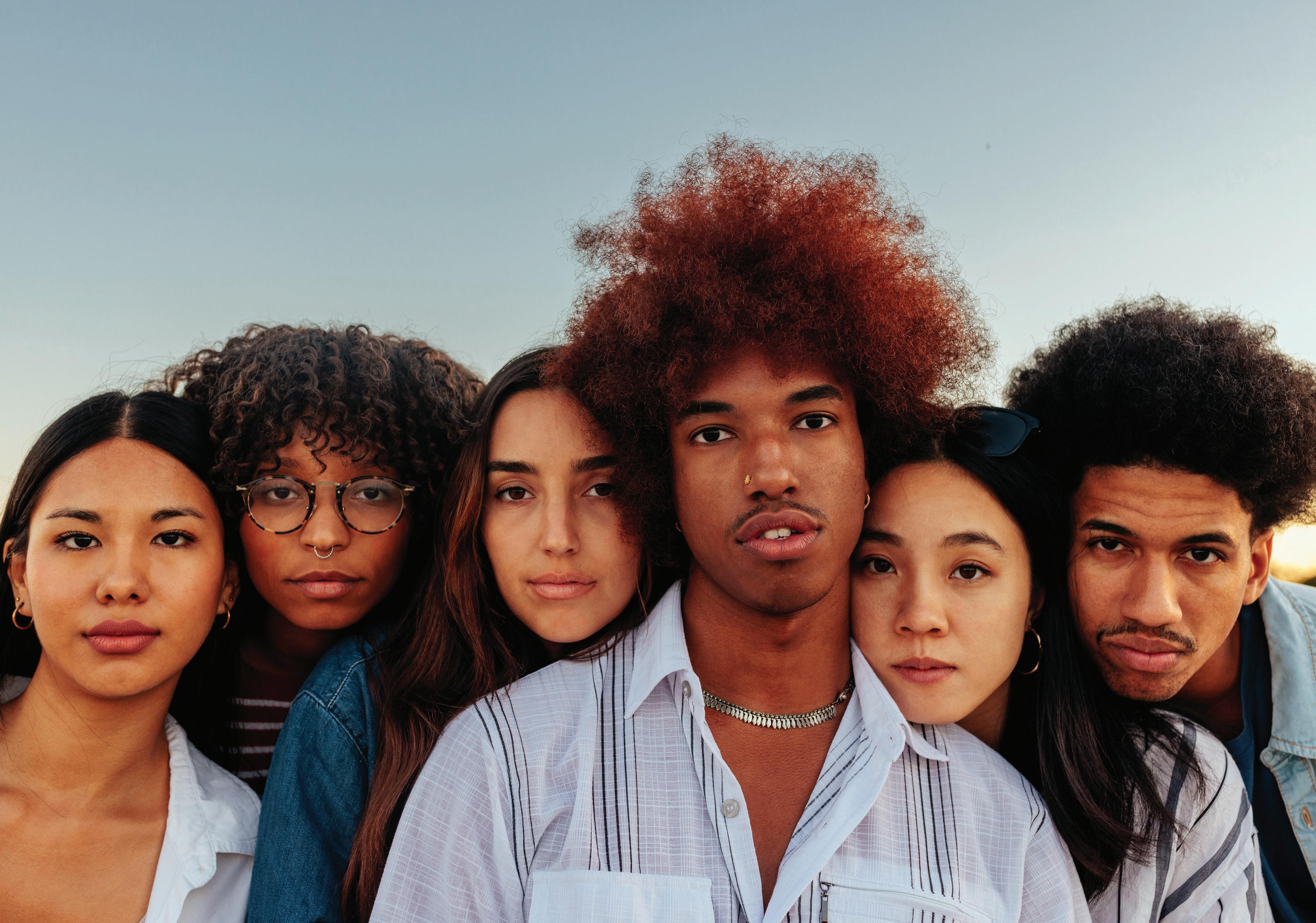




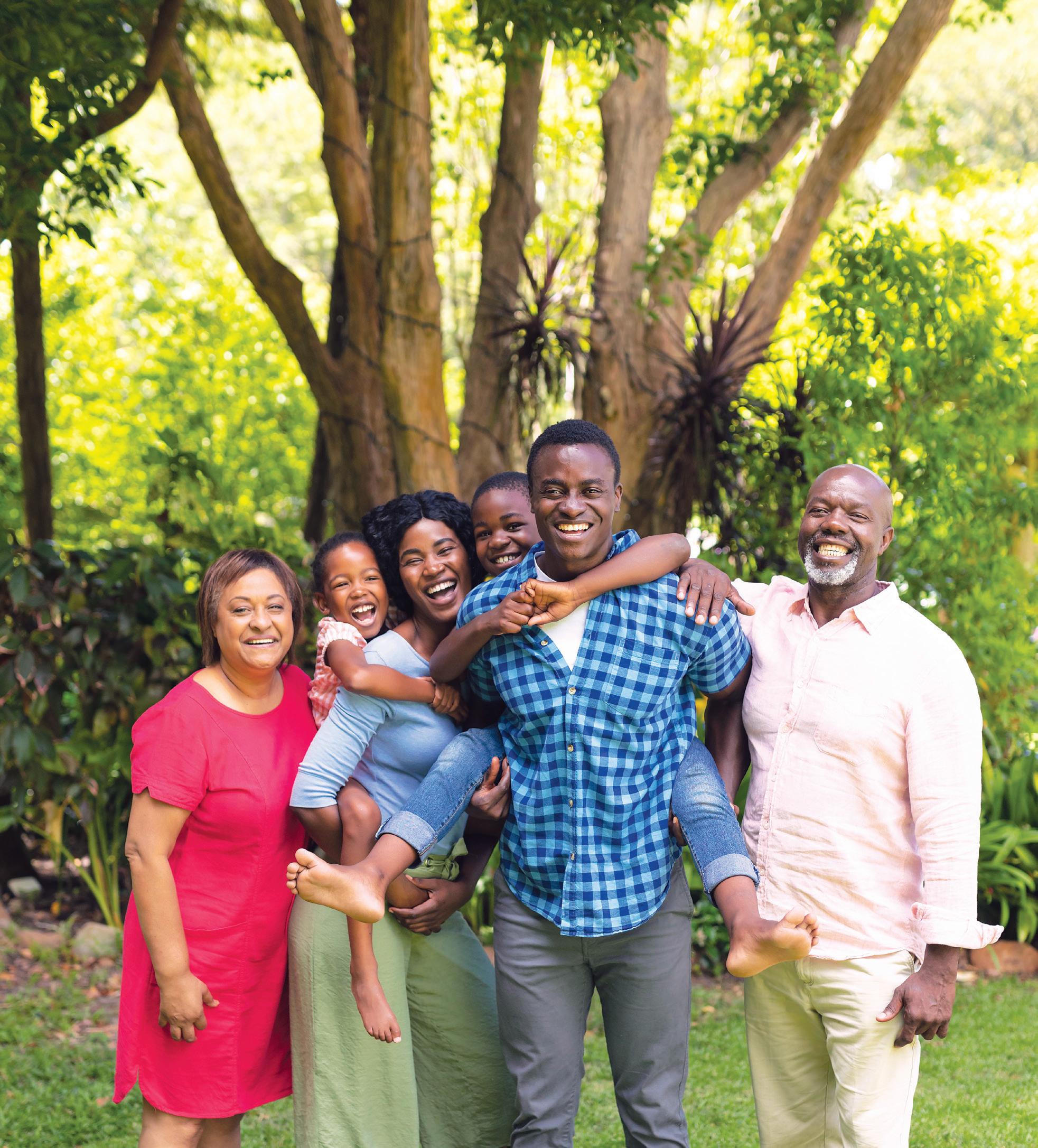


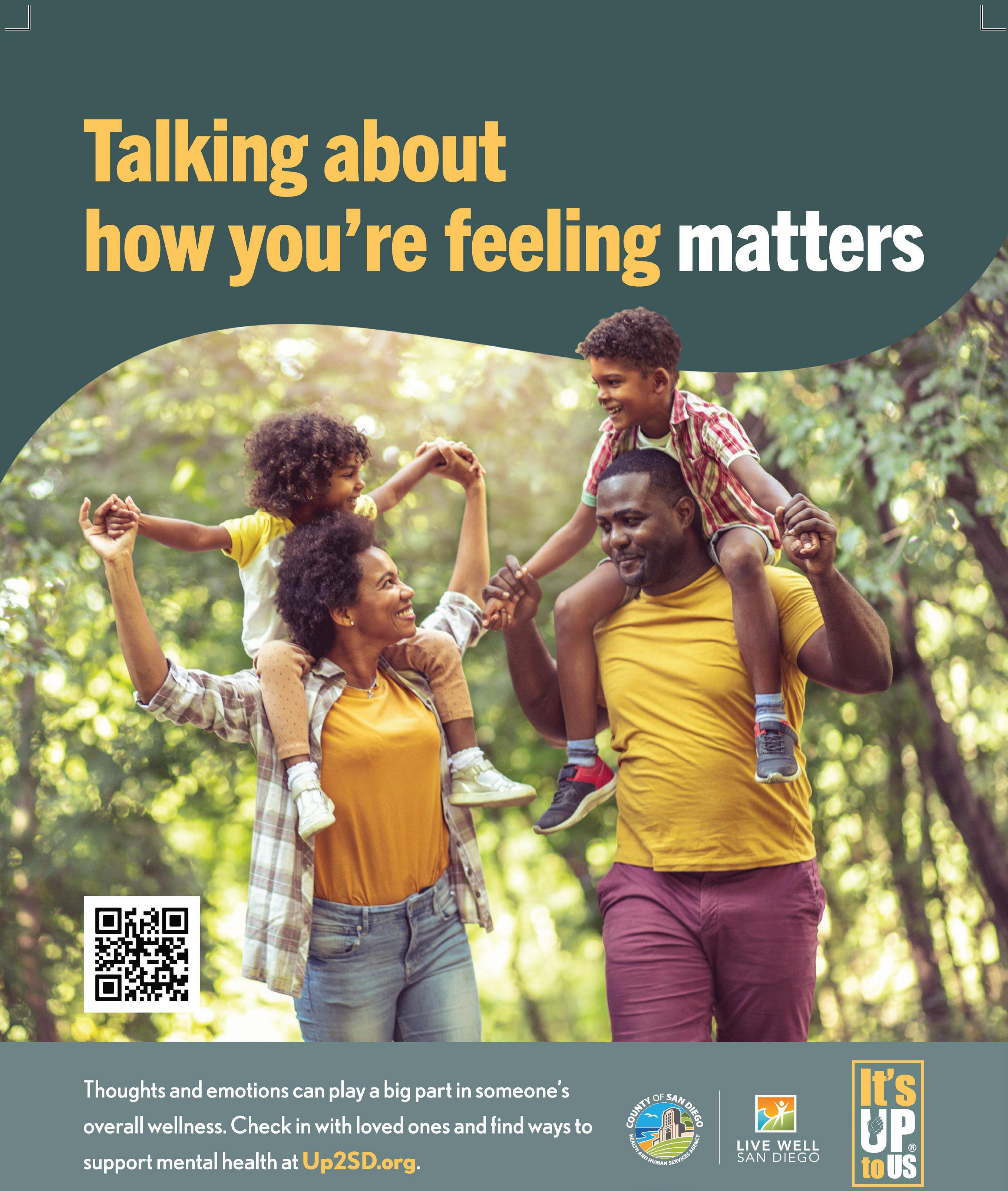

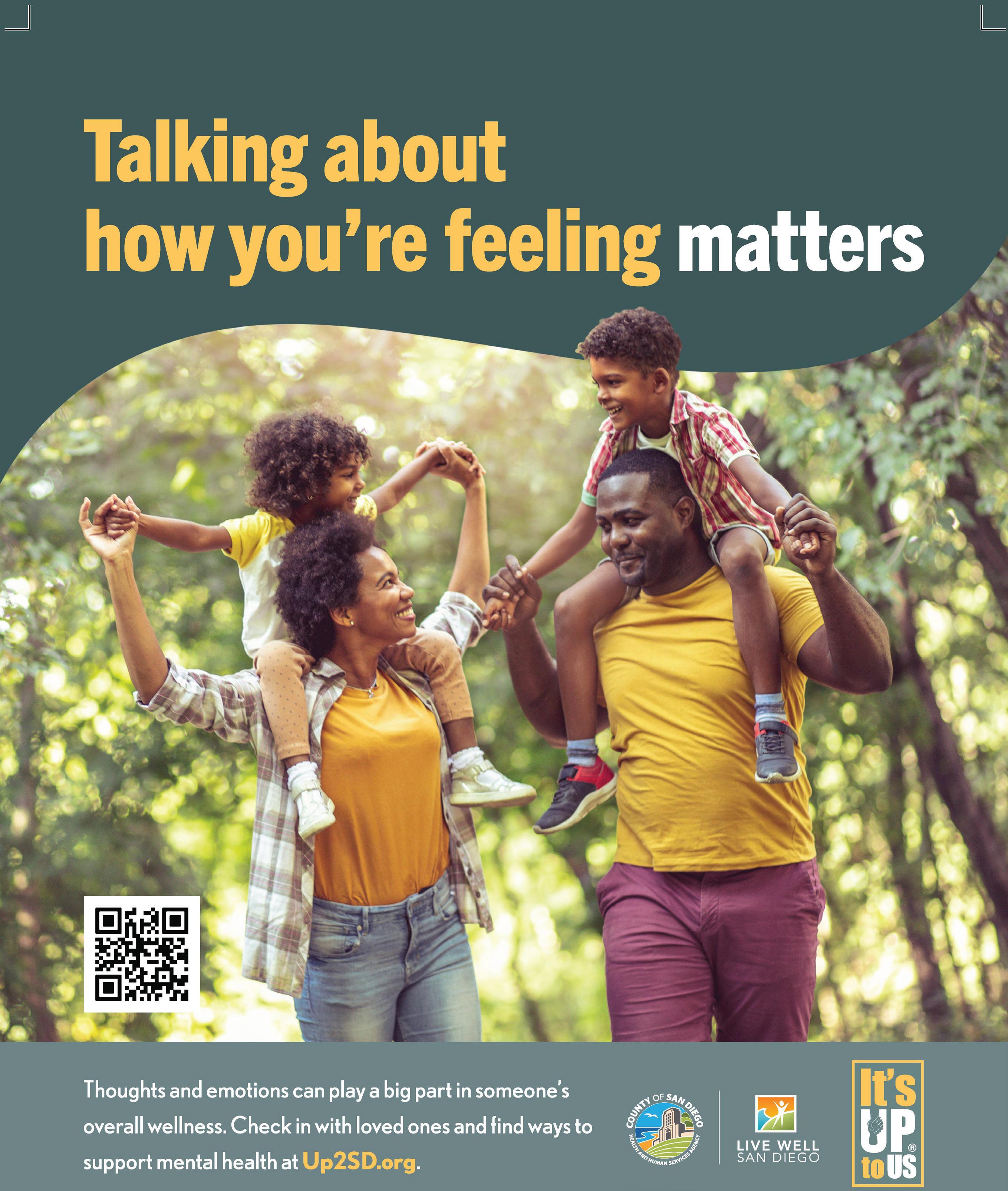
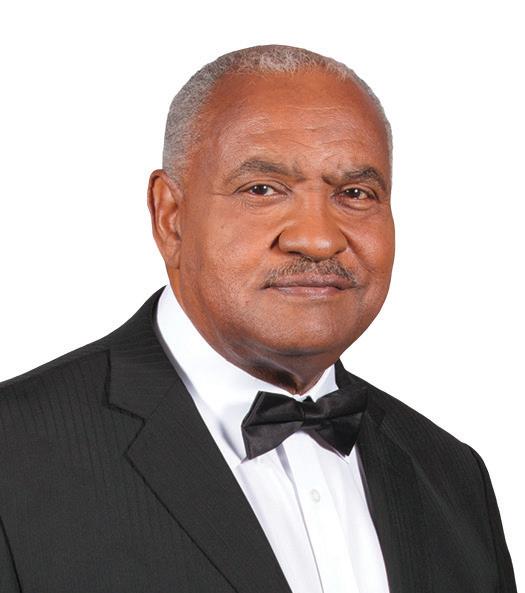 By Dr. John E. Warren
By Dr. John E. Warren
This Sixth Annual Minority Health Special issue updates and expands upon what we have presented, during the past five years, on those ethnic groups that are our Minority Health communities. This issue is a compilation of information gathered from a number of sources such

as the Office of Minority Health within the U.S. Department of Health and Human Services, the Centers for Disease Control and Prevention, the San Diego County Department of Health and Human Services and other data in the public domain.
Because of the importance of the information contained in this issue, we have published this year’s report in a pullout magazine format to increase its shelf life to indefinite use of the materials provided. This will also increase awareness of the groups identified in this issue: Black/ African American, Asian American, American Indian, Alaska Native, Native
Hawaiian and Pacific Islanders, all of whom have members here in San Diego County. This year we have allowed links to electronic ads that sponsors will run on our website connected to their ads in the magazine.
We extend our deep appreciation to those members of the healthcare industry who have made this issue possible with their generous support.
The Sixth Annual Minority Health Special Issue will be available through the Voice & Viewpoint as long as copies last following this publication date.
(619) 266-0533 Email: ads@sdvoice.info
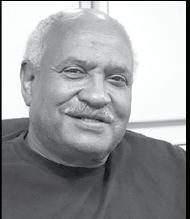



Black people make up 13.6% of the population in the United States as of 2023. The Black population has grown by nearly 32% since 2000, with the increase in foreign born Black people playing a significant role in this growth. As the population has grown, it has become more diverse, with an increase in the share of Black people who identify as multiracial and/or Hispanic.
The share of the population who identified as people of color has been growing over time, with the largest growth occurring among those who identify as Hispanic or Asian. The racial diversity of the population is expected to continue to increase, with people of color projected to account for over half of the population by 2050.
Demographic Overview: In 2023, 45.5 million people in the United States were nonHispanic Black alone, or 13.6 percent of the total population of 334.9 million. Blacks/ African Americans are the second largest minority population in the United States, following the Hispanic/Latino population. In 2022, most of the US population lived in the South (56% of the total U.S. population) The Midwest and Northeast each had 17%, and the West had 10%, according to Pew Research center. The states with the largest Black populations overall between 2010 and 2022 were Texas, Florida, and Georgia.
Educational Attainment: In 2022, as compared to non-Hispanic whites 25 years and over, 42% percent of non-Hispanic Blacks had earned at least a high school diploma, and 26% percent had a bachelor’s degree or higher. More Black women than Black men had earned at least a bachelor's degree (28.9% percent vs 22.8% percent). In 2021, 9.8 percent of non-Hispanic Blacks have a graduate or advanced professional degree,

as compared to 15.0 percent of the nonHispanic white population.
Economics: According to Pew Research Center, the average non-Hispanic black median household income was $50,000 in comparison to $81,060 for non-Hispanic white households. 20% percent of non-Hispanic Blacks in comparison to 10.0 percent of non-Hispanic whites were living at the poverty level. In 2023, the unemployment rate for non-Hispanic Blacks 25 years and over was 4.5%, higher than that of non-Hispanic whites at 2.9%.
insurance coverage: In 2021, 55.1 percent of non-Hispanic Blacks in comparison
SOURCE: US CENSUS 2023
to 73.2 percent of non-Hispanic whites used private health insurance. Also in 2021, 42.7 percent of non-Hispanic Blacks in comparison to 34.6 percent of non-Hispanic whites relied on Medicaid or public health insurance. Finally, 9.0 percent of non-Hispanic Blacks in comparison to 5.2 percent of nonHispanic whites were uninsured.
health: According to Census Bureau projections, the 2022 life expectancies at birth for Blacks are 72.8 years, with 76.5 years for women, and 69.1 years for men. For nonHispanic whites, the projected life expectancies are 77.5 years, with 80.1 years for women, and 75.1 years for men.
Demographics/health Overview: This population includes people having origins in any of the original peoples of North, South America, and Central America, who maintain tribal affiliation or community attachment. Studies on urban American Indian and Alaska Native populations have documented a frequency of poor health and limited health care options. Leading diseases and causes of death among AI/AN are heart disease, cancer, unintentional injuries (accidents), diabetes, and stroke. AI/ANs also have a high prevalence and risk factors for mental health and suicide, unintentional injuries, obesity, substance use, sudden infant death syndrome (SIDS), teenage pregnancy, diabetes, liver disease, and hepatitis, and a 2019 tuberculosis rate almost 7 times higher than the white population.
Demographics/health Overview: This racial group is defined as people having origins in any of the original peoples of East Asia, Southeast Asia, or the Indian subcontinent. Some negative factors influencing Asian American health include infrequent medical visits, language and cultural barriers, and lack of health insurance. Asian Americans are most at risk for: cancer, heart disease, stroke, unintentional injuries (accidents), and diabetes, with a high prevalence and risk factors for chronic obstructive pulmonary disease, hepatitis B, HIV/AIDS, smoking, tuberculosis, and liver disease. In 2022, over one third of all TB cases in the U.S. were reported among Asians.
Continued on page 6
Social circumstances and related environmental hazards and exposures impact health in a variety of ways. When these circumstances have implications for health, they are often referred to as social determinants of health (SDOH), which the U.S. Department of Health and Human Services (HHS) defines as “the conditions in the environments where people are born, live, learn, work, play, worship, and age that affect a wide range of health, functioning, and quality-of-life outcomes and risks”
SDOH accounts for as much as 50% of county-level health outcomes, and within SDOH, socioeconomic factors such as poverty, prevalence of jobs paying a living wage, and education availability have the largest impact. Health metrics including life expectancy, risk of developing a chronic disease (such as diabetes, heart disease, or depression), likelihood of contracting an infectious disease, and more are influenced by SDOH.
For more visit:
https://www.whitehouse.gov/wp-content/uploads/2023/11/SDOH-Playbook-4.pdf
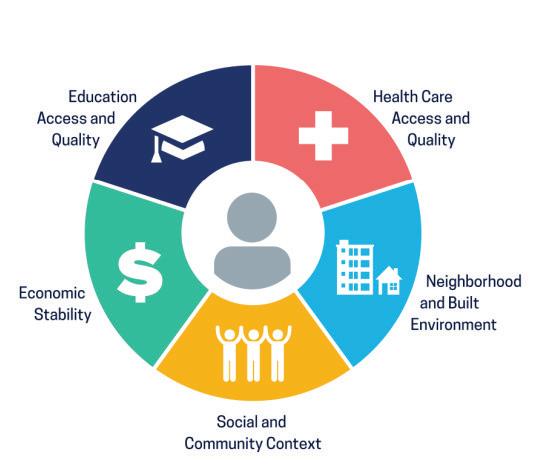
Continued from page 5
Demographics/health Overview: This racial group refers to people having origins in any of the original peoples of Hawaii, Guam, Samoa or other Pacific Islands. Significantly, in comparison to other ethnic groups, Native Hawaiians/ Pacific Islanders have higher rates of smoking, alcohol consumption, and obesity. They also have less access to cancer prevention and control programs. Leading causes of death include: cancer, heart disease, unintentional injuries (accidents), stroke and diabetes. Other prevalent health conditions and risk factors among Native Hawaiians/Pacific Islanders are hepatitis B, HIV/AIDS, and tuberculosis, with 2022 tuberculosis rates at 24.4 per 100,000 people.
Demographics/health Overview: This ethnic group includes any person of Cuban,
Mexican, Puerto Rican, South or Central American, or other Spanish culture or origin, regardless of race. In 2022, the CDC projects that the life expectancy at birth for Hispanics is 80.0 years, with 82.8 years for women and 77 years for men. Some negative health factors include language/cultural barriers, lack of access to preventive care, and the lack of health insurance. Significant causes of mortality for Hispanics include chronic lower respiratory diseases (including asthma and chronic obstructive pulmonary disease), liver disease, influenza and pneumonia, suicide, and kidney disease. Hispanics have higher rates of obesity than non-Hispanic whites.
Demographics/health Overview: Between 2010 and 2019, around 342,000 individuals immigrated to the U.S from MENA countries, with Lebanese, Iranian, and Egyptian
Social In efforts to address this, In 2023 multiple bills were put forward in congress to establish mandatory inclusion of individuals identifying with MENA descent in future collections of demographic data.
• H.R.2730 - Health Equity and MENA Community Inclusion Act of 2023
This act aims to amend the Public Health Service Act to include Middle Easterners and North Africans in the statutory definition of a “racial and ethnic” group. AB 2763–The California MENA Inclusion Act
This act advocates for the requirement of a MENA category to be included in all future collections of demographic data concerning ethnic background across all California state departments.
populations representing nearly half of the 3.5 million who reported MENA descent in the 2020 Census. Educational attainment among MENA residents aged 25 and over is notably higher than the general population, with 48.1 percent holding a college degree or higher. However, economic disparities persist, as almost 31 percent live in poverty, and lack of federal data hinders efforts to address these issues.
The following ethnicities that fall under the MENA category are:
• Middle Eastern: Afghan, Bahraini, Emirati,Iranian, Iraqi, Israeli, Jordanian, Kuwaiti,Lebanese, Omani, Palestinian, Qatari, Saudi Arabian, Syrian, Turkish, and Yemeni.
• North African: Algerian, Djiboutian, Egyptian, Libyan, Mauritanian, Moroccan, Sudanese, and Tunisian.
• Transnational Middle Eastern and North African: Amazigh or Berber, Armenian, Assyrian, Chaldean, Circassian, & Kurdish
SOURCE:ArabAmerican Civic Council,National Library of Medicine
Health is more than health care. In fact, getting health care from a hospital or clinic is only responsible for a small percentage of what makes a person healthy. Most of what makes a person healthy are the conditions and resources in their social and physical environment. This includes where you live, work, play, or worship. Your zip code should not determine how long you live or how well you live. Unfortunately, that is the reality for many San Diego County residents.
The UC San Diego Health Justice, Equity, Diversity, and Inclusion (JEDI) department is committed to changing that reality and making sure all San Diego County residents have the opportunity to be as healthy as possible. They especially want to meet the needs of individuals and communities that face barriers to health and have historically been left behind. They do this through programs designed to foster and invest in the health and economic well-being of communities they serve. The JEDI department is launching two exciting programs: a mobile health program designed to bring health care directly to individuals living in under-resourced communities and face many barriers to health, and a program designed to build up economic resources in local communities.
Mobile health programs have been used across the nation and in San Diego County to help people access health care by bringing care directly to the community — they are like having a health clinic on wheels. Taking health care to the community via mobile units can make a significant difference in the lives of people who face barriers to accessing health care, such as lack of childcare or transportation.
Despite their effectiveness, there are only 2,000 mobile health clinics in the entire country and only two mobile units in San Diego that provide breast screening. The UC San Diego Health mobile health program is planned to launch in the fall of 2024 with two mobile units, a mammography unit and a general mobile unit. The general mobile unit will start with delivering urgent care services in the South Bay and prenatal and post-partum care to Haitian and Somali communities. The mobile health programs are not just focused on treating illnesses; they are about connecting people with resources that promote health. Through education, outreach, and community partnerships, the UC San Diego Health mobile health programs aim to create a culture of health and wellness so that all San Diegans have what they need to survive and thrive.
Solely providing access to health care is not enough to advance health equity. Health equity is possible when everyone has the opportunity to be as healthy as possible and no one is disadvantaged from doing so because of their race, ethnicity, gender, or other social circumstances.
Health systems must tackle the underlying racial and economic disparities that drive poor health. The UC San Diego Health JEDI

department does this through its partnership with the Health Care Anchor Network (HAN). HAN is a nationwide collaborative of over 80 health systems, all on a mission to address the social and economic drivers of poor health in Black, Indigenous and communities of color. UC San Diego Health joined this collaborative in January of 2023. Through this initiative, the health system acknowledges its role as a robust economic engine in the San Diego and will focus on creating career pipelines within the health system for San Diego residents from historically marginalized groups and under-resourced communities, doing business with local women- and minorityowned businesses, and investing financial resources to benefit local communities. The HAN framework allows health systems to move beyond only providing health care to improving conditions in local communities that contribute to people being sick in the first place.
These exciting community focused initiatives build upon, yet greatly expand the work UC San Diego Health did during the COVID-19 pandemic to vaccinate and protect San Diego communities from the novel coronavirus.
Fueled by our cultural aspiration to ensure that everyone feels cared for and everyone belongs and our emphasis on caring for our community, not just our patients, we are excited to partner with the community to break down the barriers to health.
Crystal Wiley Cené, MD, MPH, FAHA Chief Administrative Officer for Equity, Diversity, and InclusionAssociate Chief Medical Officer,Health
Equity, Diversity, and Inclusion, UCSan Diego Health
Heart disease is the leading cause of death in the United States. The term “heart disease” refers to several types of heart conditions. In the United States, the most common type of heart disease is coronary artery disease (CAD), which can lead to heart attack. You can reduce your risk for heart disease through lifestyle changes and, in some cases, medicine.
• In 2019, African Americans were 30 percent more likely to die from heart disease.
• We are 30 percent more likely to have high blood pressure, and are less likely to have it under control.
• African American women are nearly 50 percent more likely to have high blood pressure.
• Nutrition: Eat healthy diet (increase fresh fruits and vegetables and lower salt intake)
• Weight: Maintain a healthy weight
• Exercise: Be physically active (seek advice from your doctor)
• Smoking: Do not smoke
• Alcohol: Limit alcohol intake

• From 2018-2020, 4.0 million non-Hispanic Blacks (adults and children) reported that they currently have asthma.
• We were 30 percent more likely to have asthma in 2019.
• In 2020, we were almost three times more likely to die from asthma related causes.
• In 2020, Black children had a death rate 7.6 times that of non-Hispanic white children.
• Black children were 4.5 times more likely to be admitted to the hospital for asthma.
• While all the causes of asthma remain unclear, children exposed to secondhand tobacco smoke exposure are at increased risk for acute lower respiratory tract infections, such as bronchitis. Children living below or near the poverty level are more
likely to have high levels of blood cotinine, a breakdown product of nicotine.
• Vaccines (shots) can help prevent or reduce your cancer risk (example: HPV, hepatitis)

A stroke, sometimes called a brain attack, occurs when something blocks blood supply to part of the brain or when a blood vessel in the brain bursts. Parts of the brain become damaged or die. A stroke can cause lasting brain damage, long-term disability, or even death.
• We are 50% more likely to have a stroke (cerebrovascular disease).
• Black men are 70 percent more likely to die from a stroke
• African American women are twice as likely to have a stroke.
*As compared to non-Hispanic whites.
Sources: CDC 2022. Know Your Risk for Heart Disease, CDC 2022. Prevent Heart Disease, National Center for Health Statistics,. National Health Interview Survey, NCI 2022. Seer Cancer Statistics Review,, 2016-2020, CDC 2022. National Center for Health Statistics. National Health Interview Survey, CDC 2022. Division of Vital Statistics CDC WONDER wonder.cdc.gov/ucd-icd10.html, CDC 2022. National Diabetes Surveillance System. gis.cdc.gov/grasp/diabetes/diabetesatlas-surveillance.html, CDC 2022. National Diabetes Statistics Report, 2021. Appendix Table 3. .cdc.gov/diabetes/data/statistics-report/appendix.html, CDC 2022. National Vital Statistics Report, Vol. 70, No. 8. Table 10. cdc.gov/nchs/data/nvsr/nvsr70/ nvsr70-08-508.pdf, CDC 2020. High School Youth Risk Behavior Survey Data. nccd.cdc.gov/youthonline.
According to the Centers for Disease Control and Prevention (CDC), mental health includes our emotional, psychological, and social well-being. It affects how we think, feel, and act. It also helps determine how we handle stress, relate to others, and make healthy choices. Mental health is important at every stage of life, from childhood and adolescence through adulthood. Behavioral health has more to do with the specific actions people take. It is about how people respond in various scenarios. Behavioral health can be influenced by an individual’s mental health.
• In 2020, suicide was the third leading cause of death, respectively, for Blacks or African Americans, ages 15 to 24.
• The death rate from suicide for men was four times greater than for women, in 2018.
• Black females, grades 9-12, were 60 percent more likely to attempt suicide in 2019, as compared to non-Hispanic white females of the same age.
• Poverty level affects mental health status. Black or African Americans living below the poverty level are twice as likely to report serious psychological distress.
Cancer is a term used for diseases in which abnormal cells divide without control and can take over other tissues. Cancer cells can spread to other parts of the body through the blood and lymph systems. Cancer is not just one disease, but many diseases.
Black/African Americans have the highest mortality rate of any racial and ethnic group for all cancers combined and for most major cancers. Death rates for all major causes of death are higher than for non-Hispanic whites, contributing in part to a lower life expectancy for both Black/African American men and women.
Lowering
• Making healthy choices, keeping a healthy weight
• Avoiding tobacco
• Limiting alcohol intake
• Protecting your skin. Screening tests can find some cancers early, when treatment works best.
• Vaccines (shots) can help prevent or reduce your cancer risk (example: HPV, hepatitis)
Cancer and African American Men
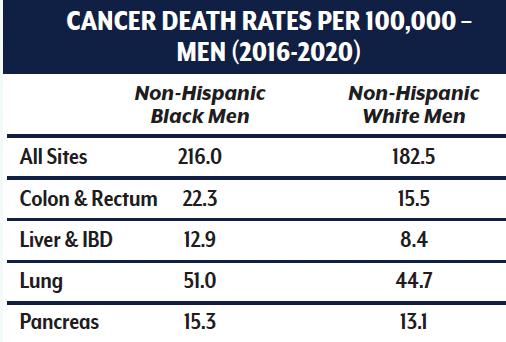
Cancer and African American WOMen
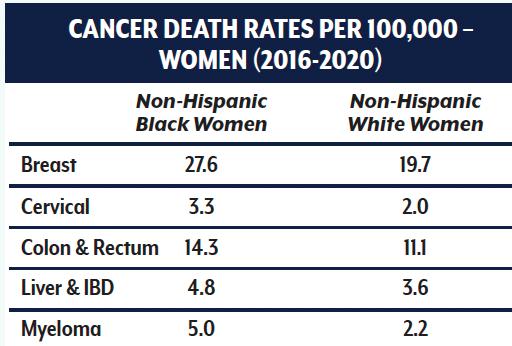
Diabetes is a chronic (long-lasting) health condition that affects how your body turns food into energy. Your body breaks down most of the food you eat into sugar (glucose) and releases it into your bloodstream. When your blood sugar goes up, it signals your pancreas to release insulin. Insulin acts like a key to let the blood sugar into your body’s cells for use as energy. Over time, diabetes can cause serious health problems, such as heart disease, vision loss, and kidney disease. There is currently no cure.
How Does DIABETES Affect African Americans?*
• In 2019, we were twice as likely to die from diabetes.
• In 2018, African American adults were 60 percent more likely to be diagnosed with diabetes by a physician.
• In 2019, we were 2.5 times likely to be hospitalized with diabetes and associated long-term complications.
Lowering Risk:
• Losing weight
• Eating healthy food
• Being active
• Taking medication as prescribed; receiving diabetes self-management education and support; and being consistent with your medical appointments
DIABETES & African Americans
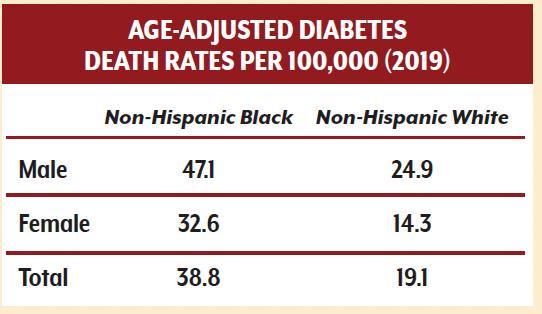

Executive Summary:
California, home to the most culturally diverse population in the country and the fifth-largest Black population of any state, has a major opportunity to be a leader in health equity. But, again and again, research has shown that racism and structural barriers in the health care system prevent Black Californians from achieving the health they actively seek.
key findings:
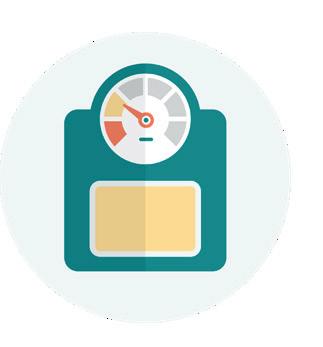
Black Californians are highly intentional in their pursuit of physical and mental healtH. Most Black Californians report focusing on their mental health (79%); getting appropriate screenings or preventive care (77%); and tracking health indicators, such as blood pressure and cholesterol (71%); and working to reach or maintain a healthy weight (71%). A strong majority (79%) focus a great deal or quite a bit on their mental health.
Most Black Californians are insured, have a regular provider, and have had at least one visit with a health care provider in the last year. Nine in ten Black Californians (90%) say they currently have health insurance coverage, and 83% have access to a regular provider. Over 9 in 10 Black Californians (92%) have seen a doctor or health care provider in the last year.
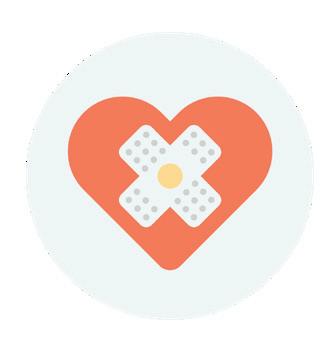
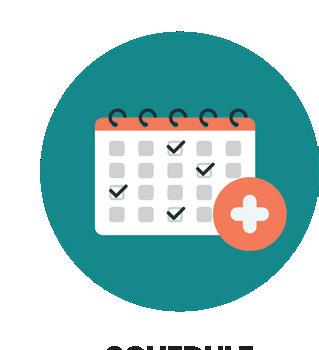
Nearly one in three Black Californians has been treated unfairly by a health care provider because of their race or ethnicity. This experience occurs particularly for Black Californians with mental health conditions (47%); for those who identify as LGBTQIA+ (43%); for those with disabilities (40%); and for women (40%). A significant number of Black Californians overall (38%) and of Black women in particular (47%) say there has been a time when a health care provider did not treat their pain adequately.
More than one in four Black Californians avoids care due to concerns that they will be treated unfairly or with disrespect . Even higher numbers of Black Californians who identify as LGBTQIA+ (41%) and those enrolled in Medi-Cal (35%) report having avoided care.


Many Black Californians adopt measures to mitigate potential negative experiences in preparation for a health care visit. Two-thirds (66%) of Black Californians report researching a health condition or concern before meeting with a health care provider, and over one-third (35%) say they have tailored their speech and/or behavior to make a provider feel at ease.
Black Californians agree on the importance of strengthening the patient-provider relationship. Black Californians have clear opinions on how to make the healthcare system work better for them. A strong majority of respondents believe it is extremely important or very important to have access to skilled, equitable healthcare.

Racial inequities in high-intensity care negatively affect the quality of care received by Black patients with chronic and complex medical conditions, several studies have shown. An NIMHD study on the lived experiences of Black patients hospitalized with serious illnesses at the end of life revealed frequent instances of perceived racial discrimination and microaggressions from health care workers that increased medical mistrust and poor patient-clinician communication in medical decision-making.
In this qualitative study, the researchers conducted one-on-one interviews with 25 Black patients (20 males and 5 females; average age of 62 years) who were hospitalized with serious illnesses—defined as a diagnosis associated with a median life expectancy of 2 years or less—at an urban teaching medical center in Washington State between
January 2021 and February 2023.
Participants reported high levels of racebased medical mistrust and frequent discrimination and microaggressions from health care workers. In describing their experiences with racism, participants cited health care workers silencing or dismissing their experiences and self-knowledge of their illnesses and bodies as the most common manifestation of racism.
One participant said, “I’ve gone to the hospital and had people ignore what I’ve said because they thought I was uneducated. Some people assume that Black people are not capable of understanding what you’re saying or answering a question properly.”
Another participant noted, “If I tell a doctor, ‘No, it’s not that, it’s this,’ they think

that you’re playing doctor. They don’t like you playing doctor.” And another participant stated, “They take it as, ‘How dare you question me?’”
Participants reported that discrimination from health care workers was worse if patients had low socioeconomic status, were less educated, were medically underinsured, or unhoused.
The researchers concluded that the experiences of racism among Black patients hospitalized with serious illnesses resulted in poor patient-clinician communication and mistrust of medical care at the end of life.
SOURCE: www.nimhd.nih.gov/news-events/ research-spotlights/experiences-of-medical-racism-among-black-adults.html
 PHOTO: Courtesy of NIMH
PHOTO: Courtesy of NIMH
According to the Centers for Disease Control and Prevention (CDC), infant mortality is the death of an infant before his or her first birthday. The infant mortality rate is the number of infant deaths for every 1,000 live births. In addition to giving us key information about maternal and infant health, the infant mortality rate is an important marker of the overall health of a society.
• Non-Hispanic blacks/African Americans have 2.4 times the infant mortality rate as non-Hispanic whites.
• Non-Hispanic black/African American infants are almost four times as likely to die from complications related to low birthweight as compared to non-Hispanic white infants.
• Non-Hispanic black/African American infants had 2.9 times the sudden infant death syndrome mortality rate as non-Hispanic whites, in 2020.
• In 2020, non-Hispanic black/African American mothers were twice as likely to receive late or no prenatal care as compared to non-Hispanic white mothers.

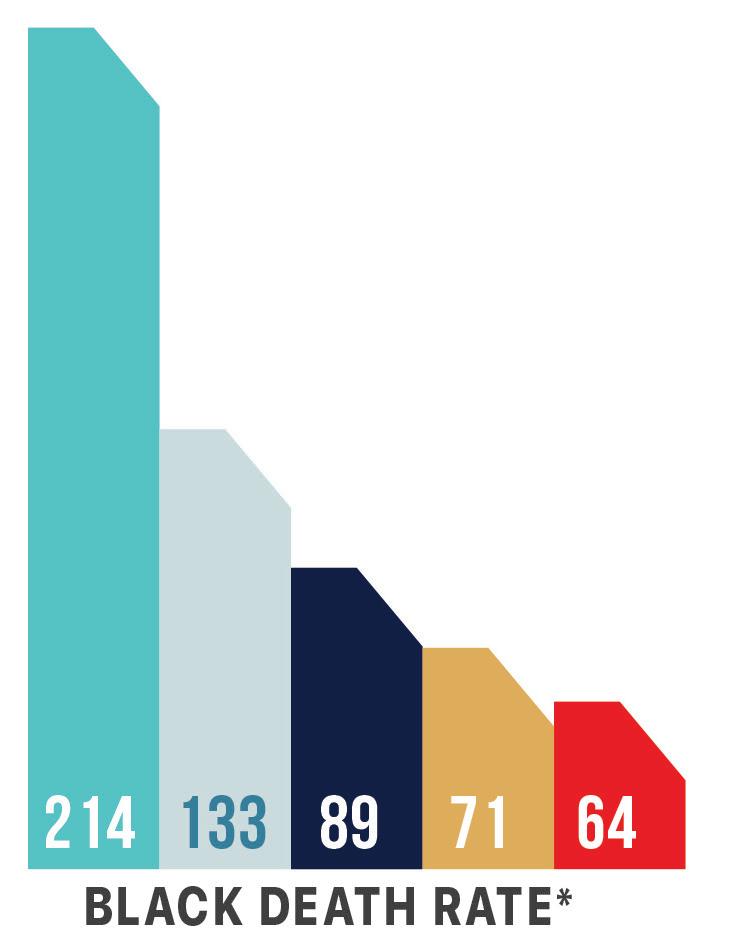

Mental health conditions are a leading cause of maternal mortality. Black women not only face a higher chance of developing perinatal mood disorders than white women, but they are also less likely to receive treatment due to factors such as fear of stigma, involvement of child welfare services and financial barriers.

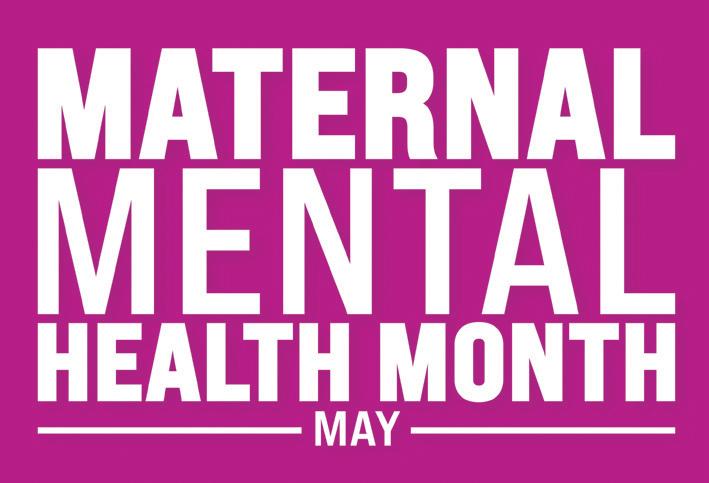
# 1 3-5x 45% >50%
PERINATAL MOOD DISORDERS
ARE ONE OF THE LEADING COMPLICATIONS OF PREGNANCY AND CHILDBIRTH
BLACK WOMEN ARE MORE LIKELY TO DIE FROM PREGNANCY-RELATED DEATHS COMPARED TO WHITE WOMEN
BLACK WOMEN EXPERIENCE
MATERNAL MENTAL HEALTH SYMPTOMS
MOST PREGNANCYRELATED DEATHS OCCUR IN THE POSTPARTUM PERIOD
Women who give birth find it difficult to access treatment for perinatal mood and anxiety disorders. Lack of time for screenings due to work or childcare, transportation limitations, language barriers, unaffordable mental healthcare, and lack of access to quality mental healthcare in the community, along with other societal and structural barriers.
LACK OF SOCIAL SUPPORT
Megaphone in hand, Dr. Latisa S. Carson was among the crowd of health care providers on March 19th, 2024 who marched down to Chula Vista City Hall in protest of the closure of the only birthing unit in South Bay—Scripps Mercy Chula Vista. “No closure, no fear! Labor, delivery, keep it here!” they shouted.
minority women deliver in lower quality hospitals with higher maternal morbidity than whites.
The impact of having quality care, representation and a culturally inclusive clinical environment in the medical field is crucial for patients. It boosts physician-patient communication and trust, adherence to medical advice, follow-up rates, and therapeutic success.

“If you haven't gone to the doctor, if you haven't done preventive things, a lot of times when you come to the hospital, you're really ill,” said Dr. Carson
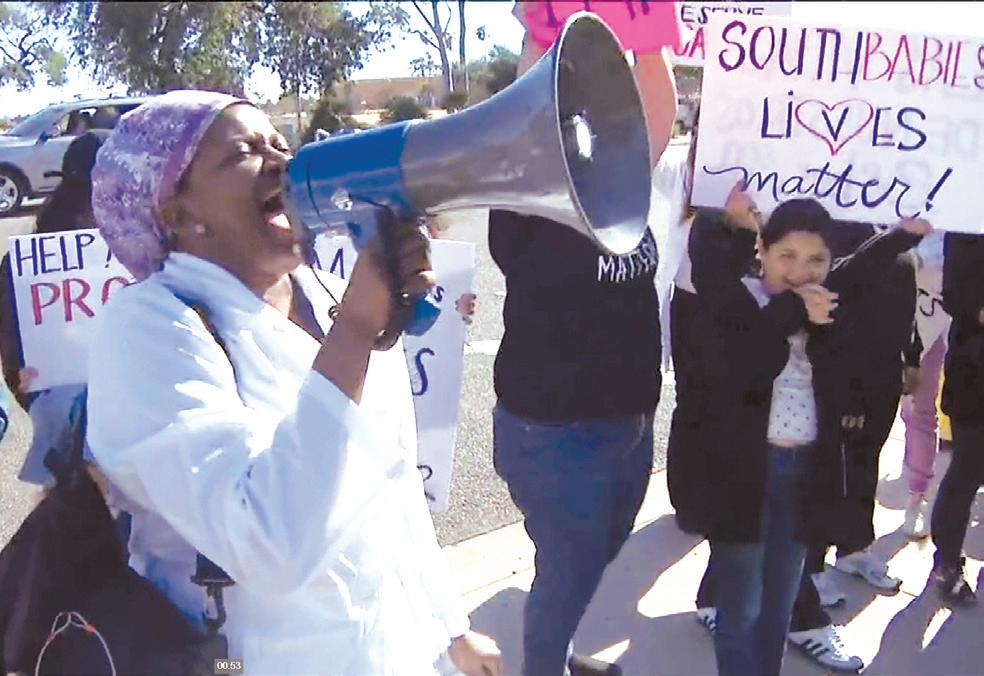
Amid the startling statistics on Black female mortality rates, lack of access to a provider, and other socioeconomic disparities that impact pregnancy, Dr. Latisa S. Carson is on the front lines in pursuing wraparound equity for her patients and the industry as a whole.
Raised in Southeastern San Diego, Dr. Carson is the only female African American obstetrician-gynecologist in solo private practice in San Diego County.
Disparities in Black maternal health are tied to many factors, and one of them is quality of care. Medical researches at Mount Sinai University have found that
Carson is noting some progress in regards to representation. Throughout her 25-plus year journey through the reproductive industry, Dr. Carson laments, however, that in regards to actual progress for African American maternal health disparities are still glaring. Black
In regards to maternal mortality rates, the CDC finds that most are indeed preventable; 4 out of 5 times; an 80% rate.
Following the recent announcement of the closure of the birthing unit at Scripps Mercy Chula Vista Hospital, Dr. Carson joined the picket line to protest against this decision.
“I think, culturally we're misunderstood. As far as how we say things or the way that we say things, some people misinterpret what we're saying, and maybe they're not able to assess us as well [as other patients].”
— DR. LATISA CARSON
women are three times more likely to die from a pregnancy-related cause than White women.
Dr. Carson says this disparity is tied to many complicated factors but, overall, points to how African Americans have historically been treated in the medical system.
Subsequently, cultural misunderstanding fuels factors such as mistrust in medical environments or the absence of culturally sensitive healthcare providers, leading to lack of preventive care.
This facility in particular serves lower income, Hispanic, and infants of color extending from Chula Vista to South Bay border cities, according to Carson.
Scripps says that due to continued high demand for emergency medical-surgical and cardiac services, inpatient beds at Scripps Mercy Chula Vista are currently occupied beyond full licensed capacity. Whereas in the OB units, “only half the beds are in use.”
Yet, Dr. Carson says it signifies the “devaluing of the care of women.”
A circulating petition signed by Carson and
a thousand other advocates details their opposition–citing that the closure will exacerbate birthing disparities, and create transportation issues, especially for mothers who rely on public transportation to get from the South Bay to Downtown.
While the initiative to keep the birthing unit open at Chula Vista was unsuccessful, it did set the tone to require more notice and due diligence before the hospitals decided to close a birthing unit.
Reducing Black maternal mortality involves a multi-tiered approach involving the patient, provider and public health policy. Providers like Carson may come few and far between, however her impact has touched thousands in the southeastern community.
Macy Meinhardt is a part of the inaugural cohort of the UC Berkeley Local News Fellowship serving Voice & Viewpoint.
Visit www.sdvoice.info to read the full article.
• Educate and train maternal health practitioners to operationalize health equity
• Amplify the historical contribution of Black scholars in mental health and invest in Black leadership
• Invest in Black women-led community-based organizations and social safety-net services
• Honor and invest in culturally congruent community-based and traditional healing practices that promote wellness
• Promote integrated care and allied health professionals in mental health services decision-making

• Black Legacy Now San Diego (www.blacklegacynowsd.com)
• San Diego County Black Infant Health Program (BIH) (www.neighborhoodhouse.org/blackinfanthealth/)
• Frontline Doula Services (https://www.frontlinedoulas.com) Support Hotlines
• Perinatal Equity Initiative (PEI) www.cdph.ca.gov
• Shades of Blue (www.shadesofblueproject.org)
• Postpartum Support International (PSI) www.postpartum.net/
• Medicaid Postpartum Coverage Extension Tracker (www.kff.org)
SOURCE: Black Mamas Matter Alliance: FACT SHEET BLACK MATERNAL MENTAL HEALTH /www.blackmamasmatter.org

Sharp HealthCare is dedicated to achieving health equity by addressing the needs, challenges and cultural norms that affect care access, engagement and choices throughout our diverse community.
Demographics/Societal Issues:
• More than 1 in 5 lived in poverty as of 2018.
• Roughly 30% are women-head of household homes, compared to 9% of white homes.
• Despite progress made over the years, racism, negative stereotypes and attitudes of rejection, though decreased, continue to occur with measurable, adverse consequences.
• The Black immigrant population in the U.S. increased from 816,000 in 1980 to over 4.2 million by 2016. 39% were from Africa and nearly half were from the Caribbean.
According to SAMHSA’s 2018 National Survey on Drug Use:
• Serious mental illness (SMI) rose for all ages 2008 and 2018.
• Major depressive episodes and suicidal thoughts, plans, and attempts are rising among Black and African American young adults.
• Binge drinking, smoking (cigarettes and marijuana), illicit drug use and prescription pain reliever misuse are more frequent among Black and African American adults with mental illnesses.

Prevalence - Black and African Americans are more likely to:
• Report serious psychological distress (twice as likely if living below the poverty level).
• Have feelings of sadness, hopelessness, and worthlessness.
• To die from suicide at all ages. (teenagers attempt suicide more than their White peers - 9.8% v. 6.1%.
Treatment Issues - Black and African Americans are:
• Over-represented in our jails and prisons, with nearly 40% in the prison population.
• Ill-served - less than 2% of American Psychological Association members are Black or African American.
• Subject to stigma and judgment, research indicates that Blacks and African Americans believe that mild depression or anxiety would be considered “crazy”.
Access/Insurance For Black and African Americans:
• Disparities in access to care and treatment have persisted over time.
The following organizations are among those that offer additional information, with a focus on outreach to Black and African American communities:
San Diego Black Nurses Association
National Black Nurses Association
National Medical Association
Lee Thompson Young Foundation
SOURCE: Census.gov/quickfacts, Mental Health America

Not sure if you or someone you know is living with mental health problems? The following feelings or behaviors
EATING OR SLEEPING TOO MUCH OR TOO LITTLE
PULLING AWAY FROM PEOPLE AND USUAL ACTIVITIES
HAVING LOW OR NO ENERGY
FEELING NUMB OR LIKE NOTHING MATTERS
HAVING UNEXPLAINED ACHES AND PAINS
FEELING HELPLESS OR HOPELESS
SMOKING, DRINKING, OR USING DRUGS MORE THAN USUAL
FEELING UNUSUALLY CONFUSED, FORGETFUL, ON EDGE, ANGRY, UPSET, WORRIED, OR SCARED
YELLING OR FIGHTING WITH FAMILY AND FRIENDS
EXPERIENCING SEVERE MOOD SWINGS THAT CAUSE PROBLEMS IN RELATIONSHIPS
HAVING PERSISTENT THOUGHTS AND MEMORIES YOU CAN’T GET OUT OF YOUR HEAD
HEARING VOICES OR BELIEVING THINGS THAT ARE NOT TRUE
THINKING OF HARMING YOURSELF OR OTHERS
TO
TAKING CARE OF YOUR KIDS/ GETTING TO WORK OR SCHOOL
New federal data shows that the suicide rate among Black youth ages 10 to 19 surpassed that of their White peers for the first time in 2022, increasing 54% since 2018, compared to a 17% decrease for White youth. In fact, the suicide rate among Black adolescents is increasing faster than other racial and ethnic groups.
Black adolescents are significantly less likely to receive mental health care due, in part, to systemic inequities, including racism and poverty, as well as deeply rooted stigma around mental health and well-founded cultural mistrust of the health care system.
A 2019 report to Congress put forth recommendations.
Culturally competent suicide care providers
Mental health providers should be trained in implicit and unconscious biases and in identifying signs of depression and suicidal behaviors in different racial and ethnic groups.

Use of suicide risk screening tools and interventions
To identify suicide risk the American Academy of Pediatrics issued a recommendation in 2022 that all pediatric providers screen patients 12 years old and older for suicide risk at least once a year.
SOURCE: CDC & Pew Charitable Trust
In San Diego County and across the nation, African-American infant mortality rates are drastically high er than many other race/ethnic groups. Infant mortality, defined as the death of an infant before their first birthday, is an important marker of the overall health of a community.
The leading causes of infant mor tality are birth defects; compli cations of pregnancy; disorders related to prematurity and low birth weight; and sudden infant death syndrome, which many refer to as SIDS. Infant mortality has significantly declined for all San Diegans and among local African Americans over the past two decades.
infants, the San Diego County Black Infant Health (BIH) program offers
port during pregnancy and the first year of parenthood.

On average, from 2000-2002, there were 14.3 African-American infant deaths in San Diego County for every 1,000 live births. By 2019-2021, that number had fallen to 8.6 per 1,000, a 40 percent decrease.
Unfortunately, despite these declines, African-American babies are about five times more likely to die before their first birthday as compared to Whites (1.6 deaths per 1,000 births) – representing a persistent and unmistakable health disparity. Many factors contribute to this gap, such as differences in access to medical care, poor nutrition, stress, environmental exposures, and structural racism, which fosters social and economic inequalities.
To improve the health and well-being of mothers and reduce the risk of infant mortality among African-American
resources and services at no cost to pregnant African-American women in designated service areas.
In San Diego County, California Perinatal Equity Initiative (PEI) funds have been used to increase understanding of and identify factors associated with racial inequities related to African-American maternal and infant mortality rates.
PEI funding covers activities that include the Black Legacy Now media campaign and website aimed to increase awareness of African-American preterm births and maternal health, and what can be done to reverse trends.
Other PEI components include Implicit Bias trainings to healthcare professionals serving pregnant African-American women and a Fatherhood program to promote paternal involvement and sup -
Infant mortality reflects the overall health of a community, including its access to quality healthcare and social and built environments.
Other County of San Diego programs that link pregnant women to providers and provide additional education and support during pregnancy include the Perinatal Care Network (PCN) and the Comprehensive Perinatal Services Program (CPSP).
Women should obtain care before and during pregnancy to reduce the risk of poor birth outcomes.
Safe infant sleep environments are very important. Pregnant women and parents are also encouraged to seek help and support when needed.
For more information and to learn about programs in the County of San Diego that protect and support pregnant women, children, families, and communities, visit the Black Legacy Now website at blacklegacynowsd.com, the Black Infant Health program at www.sdbih. org, or Maternal, Child, and Family Health Services at www.sdmcfhs.org.
If you would like to get involved in the Black Infant Health/Perinatal Equity Community Advisory Board, contact Rhonda Freeman at rhonda.freeman@ sdcounty.ca.gov.
Article courtesy of Maternal, Child, and Family Health Services, Public Health Services.
1
ST Assess your risk. Visit https:/ /www.diabetes.org/risk-test and take the test to find out if you may have prediabetes.
2
ND Talk to your doctor. The most accurate way to find out if you have type 2 diabetes is through a blood test ordered by your doctor.
3
RD
Find a program near you. Visit https://www.cdc.gov/diabetes/ prevention/find-a-program. html and enter your ZIP Code to find a lifestyle change program near you.
eart disease and stroke are among the top five leading causes of death in San Diego County, with high blood pressure being a leading risk factor. Historically, African-American/Black adults have been burdened with higher rates of high blood pressure, heart disease and stroke.
Many things can affect your heart’s health, such as not getting enough sleep or exercise, and having a poor diet. Smoking also plays a negative role in heart health.
Chemicals in cigarette smoke cause the cells that line blood vessels to become swollen and inflamed. This can narrow the blood vessels and lead to many heart conditions as well as stroke and blockages in the arms, legs, hands, and feet.
The best thing all smokers can do for their hearts is to quit.
Smokers who quit start to improve their heart health and reduce their risk for heart disease immediately.

Within a year, the risk of heart attack drops dramatically, and even people who have already had a heart attack can cut their risk of having another if they quit smoking.
Within five years of quitting, smokers lower their risk of stroke to about that of a person who has never smoked.
And within 15 years of quitting, the risk of heart disease from blockages in vessels supplying the heart with blood drops to that of a nonsmoker.
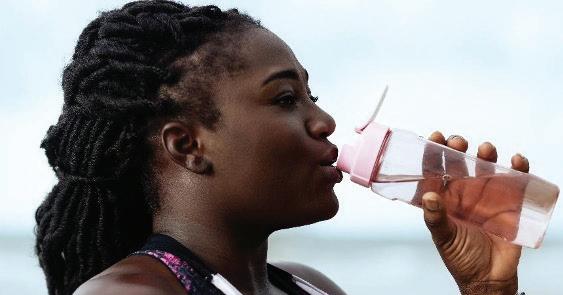
For those who smoke, secondhand smoke from another smoker can still harm their health and damage your arteries. Quitting smoking completely and staying away from secondhand smoke can significantly improve your heart’s health.
Make heart health a priority by visiting Kick It California, a free counseling service that has helped over a 100,000 Californians quit smoking successfully! With services offered over the phone, online, through text, and their Kick It mobile app, you can quit smoking today! Visit: https://kickitca.org.
Article courtesy of the County of San Diego Public Health Services.
betes could develop diabetes within five years.
Although high blood sugar is a wellknown health risk, many people in San Diego County are not yet diagnosed.
Nearly half of all local adults may have untreated prediabetes. This is a condition where a person’s blood sugar is higher than normal, but not at the level of diabetes. Of that group, more than 80% don’t know that they have it.
If untreated, many people with predia -
This is of particular concern for the African-American community where people are twice as likely as other racial groups to visit an emergency room or go into the hospital because of diabetes. Nowadays, almost everyone knows a friend or family member who has diabetes.
It is possible to slow or even prevent the progression from prediabetes to diabetes. People who are overweight and have prediabetes can lower their risk of diabetes. Losing 5% to 7% body weight (10-14 pounds for a 200-pound person) and exercising two and a half hours per week can help.
People with Medi-Cal, Medicare and some commercial insurances can enroll in a lifestyle change program. The National Diabetes Prevention Program has classes and lifestyle coaches to help.
For free nutrition resources and information on nutrition education classes, please visit the County of San Diego CalFresh Healthy Living webpage at www.sandiegocounty.gov and fill out the contact form.
To download a directory with local healthy living programs and resources, please visit bit.ly/HealthyLivingDirectory.
Article courtesy of County of San Diego Public Health Services.
Many people from racial and ethnic minority groups have difficulty getting mental health care, something that is acknowledged by experts ranging from San Diego County Behavioral Health Services to the Centers for Disease Control and Prevention.
The reasons vary. They can include cost or not having adequate health insurance coverage. It may also be challenging to find providers from one’s racial or ethnic group.
Stigma or negative ideas about mental health care may also prevent people from seeking services.
Maintaining good mental health is important. Establishing a mental health routine or daily practice can help protect against life’s hardships and stressors.
But it can be hard to know where to start and, often, it can feel like there are too many obstacles in the way to set aside time to care for our mental health.
San Diego County Behavioral Health Services has developed a no-cost 30-Day Mental Wellness Practice to help build a personal wellness routine. The activities include physical practices for the body, cognitive practices for the mind, and emotional and social practices for mood and relationships.
Searching online for “30-Day Mental Wellness Practice” will bring up a link to website that includes helpful advice. Since May is Mental Health Month, this can be a good time to get started.
Here are some other local Countysponsored resources.
It’s Up to Us (Up2SD.org) provides general information about mental health awareness and how you can help reduce stigma. It also has helpful tips and information to support mental health and wellbeing.
The San Diego Mental Health First Aid program offers a free course to increase personal mental health literacy. Call the program at 619-543-0412 or visit mhasd.org to sign up.
The San Diego Suicide Prevention Council (SPC) offers free “Question, Persuade, and Refer” Gatekeeper Trainings for Suicide Prevention. It is designed to give members of the public the basic skills necessary to recognize warning signs that someone may be contemplating suicide. The council also provide free Gay, Lesbian, & Straight Education Network (GLSEN) trainings for educators. Call the Suicide Prevention Council at 858-609-7960 for more information and to sign up for a training.
For organizations that would like to host a presentation about mental health and wellbeing, contact the Breaking Down Barriers Program at 858-637-3301. This outreach and education program works with Black, Indigenous, and People of Color (BIPOC) and the LGBTQIA+ community to talk about mental wellness.
The County’s Access & Crisis Line offers crisis support and helps make connections to behavioral health resources. Call 1-888-724-7240 and speak to an experienced counselor. The ACL is operated 24/7 with language interpreter services available to provide help in over 200 different languages. The ACL is also a local partner of the 988 Suicide & Crisis Lifeline. Calls made to 988 from a San Diego
area code will be rerouted to the ACL.
The Elder Multicultural Access and Support Services (EMASS) program serves older adults in need of specialized support services with focused attention to Black, Chaldean, Iraqi, Filipino, Hispanic, and Somali seniors (60 years and older) by providing outreach, engagement, and education for prevention and early intervention of mental health challenges. Visit upacSD.com and click on services for more information.
San Diego County is home to many active-duty military, veterans, and their family members. The Courage to Call program is dedicated to improving mental wellness for Veterans, Active Duty, Reservists, National Guardsmen, and their families throughout San Diego County. The 24/7 helpline is available at 1-877-698-7838 or 2-1-1 Option 4.
First Responders and their families can receive mental health support tailored to their needs by calling the Fire Captain Ryan J. Mitchell's First Responders Behavioral Health Support Program at 1-833-YU-FIRST (1-833983-4778).
Throughout May, visit the It’s Up to Us website at www.Up2SD.org for more resources and information on upcoming community events for mental health.
Article courtesy of County of San Diego Behavioral Health Services

Across the nation and locally to Southeastern San Diego, access to nutritious food is not just a matter of convenience. It is a fundamental human right that is often compromised in minority dominant neighborhoods due to deeply rooted systemic disparities. As a social determinant of health, community food environments affect health, and can create or perpetuate conditions that contribute to health disparities and inequities.
Community food environments are defined by the type of gro-

cery stores, eateries, and corner stores that are in a local area and the geographical proximity the community has to them. This is also known as a “food desert” which has been a designated title given by the USDA for Southeastern San Diego. Food Deserts and food insecurity contributes to high rates of diet-related ill-
See SOUTHEAST page 22

For 120 years, Paradise Valley Hospital has dedicated itself to serving our community. No other healthcare organization has demonstrated the loyalty that we have in serving Central San Diego and the South Bay. And we do this because we are a product of our community: we’ll take care of you like our own, because the people of these communities are our own.
We are a certified Advanced Primary Stroke Center, a STEMI Severe Heart Attack Receiving Center, and an accredited Geriatric Emergency Department. We also offer free- to lowcost health education classes through our Center for Health Promotion. Visit our website at ParadiseValleyHospital.net to learn about these services and more.

Continued from page 21
nesses such as diabetes and heart disease within the area, specifically among people of color.
Low Income communities, especially communities of color, experience higher rates of food insecurity and dietrelated diseases.
San Diego County Food Vision 2030 (sdfoodvision2030.org)
Why are there fewer fresh food markets here compared to other parts of San Diego? Economic disparity. Building a grocery store in Southeastern San Diego costs the same as elsewhere, but lower profits dissuade developers from investing. Typically in these areas there is an overabundance of fast food chain restaurants, liquor stores, and ultra- processed food options. Numerous low-income families lack access to vehicles and/or juggle multiple jobs while raising young children, and so they often rely on these easily accessible, but unhealthy food choices as their main source of meals throughout the week.
Founded in 1994, Project New Village is a community rooted organization focused on bridging the gap for residents in Southeastern San Diego to have access and education to healthy food options.
“It wasn't just about people not having food, but the way food was distributed in the food chain.” - Diane Moss
After securing the vision to build an alternative food ecosystem, neighbors in Southeastern San Diego expressed interest in starting a community garden and farmers market to grow and sell their own produce—an initiative to boost both community health and the economy. Eventually, the idea for a Mobile Food Truck became realized. Securing a grant from the State of California, the traveling truck buys produce from local farmers in the area and sells to people all over the neighborhood six times a week.
“There's no other truck like this anywhere in San Diego County, and I've made the conscious decision to serve our [local] area,” said Moss.
Moss shares with Voice & Viewpoint that Project New Village’s new undertaking will be the establishment of a hyperlocal food hub. A grocery if you will, where people grow food to sell to folks in the neighborhood. The organization is also in talks to incorporate a community-commercial kitchen into this hub, where they can teach people, host classes, and create a space where people can come in and cook their own food.
Addressing food insecurity in San Diego demands a multifaceted approach, encompassing community-driven initiatives and sys-
temic changes. Efforts like those of Project New Village highlight the importance of grassroots solutions, such as community gardens and mobile food distribution. By combining community-led efforts with policy reforms, San Diego can move closer to ensuring equitable access to nutritious food for all residents, thereby fostering healthier and more resilient communities across the city.
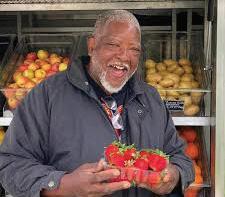


Nutrition insecurity disproportionately affects people of color as the rate for Black/African Americans, Native Americans, and Hispanic/Latino people are all well above the average
Wages between these populations are uneven as BILPOC communities earn far less than the average

Important conversations about mental health are becoming more common, an important step to protect internal wellbeing. But how much have you thought about your brain’s health recently?
The Alzheimer’s Association reports that nearly 1 in 3 seniors dies with Alzheimer’s or another form of dementia, with older Black Americans nearly twice as likely to be diagnosed with dementia than older white Americans. In 2015, “Alzheimer’s Disease and Related Dementias” (ADRD) was the third leading cause of death in San Diego County, and the sixth in the nation.
According to the Alzheimer’s Association,
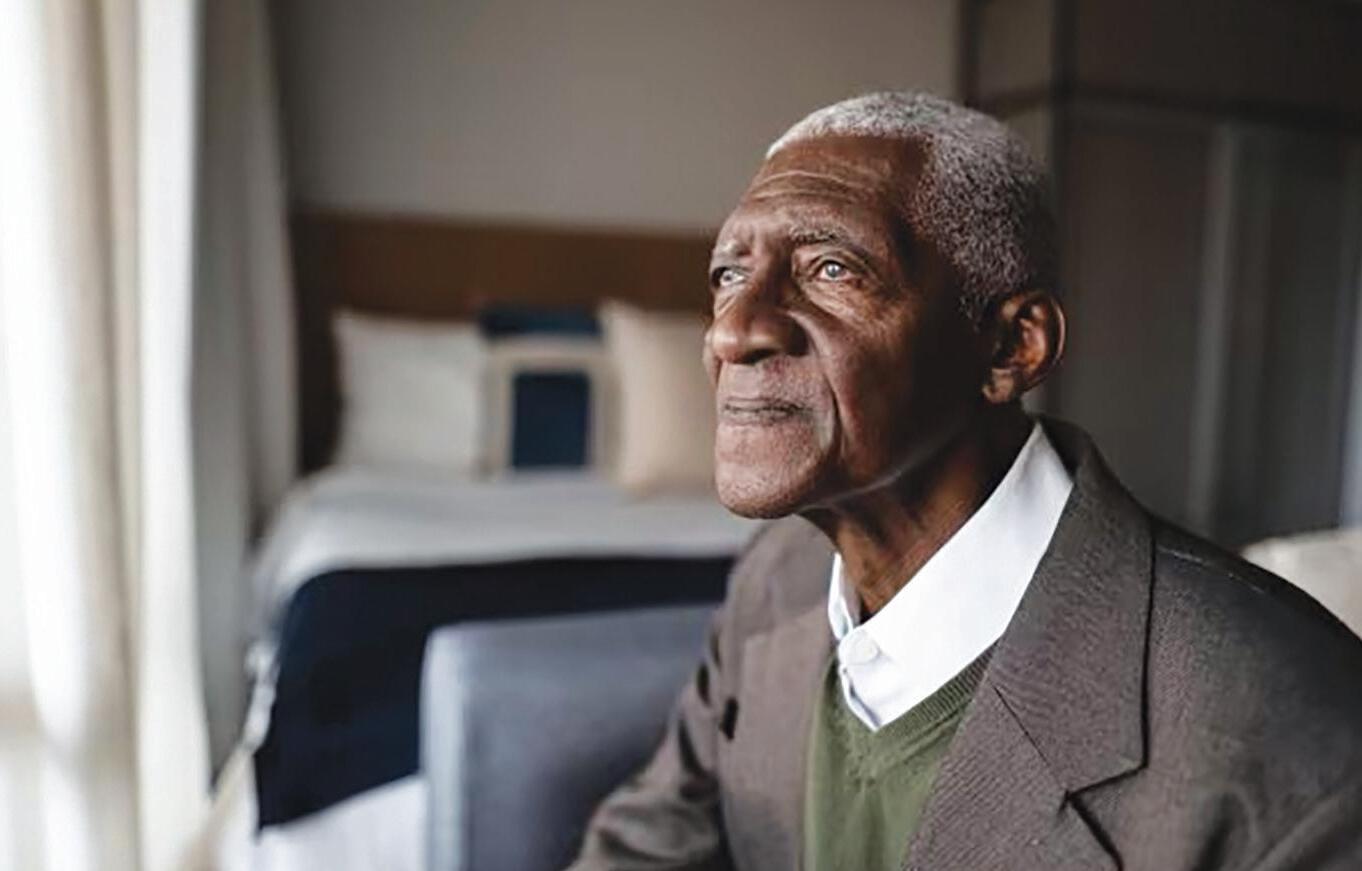
the disease is a combination of what are commonly known as “plaques” and “tangles” in the brain. These plaques and tangles prevent vital cell communication and function, slowing the brain’s ability to work within the body.
The numbers tell a grim story, but with diagnoses rising, research is also quickly advancing. Clinics in San Diego have even been approved to begin trials of Leqembi, a drug that may slow the progression of the disease.
Despite the significantly higher risk that certain demographics run of being diagnosed with the disease, there are patterns of inequity among research and understanding what leads to these disparities. Groups like

Black in Neuro are seeking to change that by connecting Black doctors and students with each other, such as Dr. Kacie Deters, a Black in Neuro seminar series lead.
Dr. Kacie Deters is a UCLA professor and scientist researching the racial disparities in Alzheimer’s, specifically understanding why rates are higher among different populations.
“Understanding the intersection of risk factors that drive cognitive decline and dementia in the Black population is critical to accurately assess, predict, and develop interventions for cognitive health,” she wrote on the UCLA Deters Lab research page.
A study from the National Institute on Aging found that, although Black adults are at higher risk of developing ADRD, they’re less likely to be formally diagnosed, especially early on.
“Many Black older adults tend to seek medical treatment when they encounter neuropsychiatric symptoms such as hallucinations, delusions, and personality changes, but delay help for memory problems, which are often viewed as a normal part of aging,” the study says.
While scientists aren’t completely sure what causes Alzheimer’s, there are certain lifestyle factors that influence its development—the CDC recommends keeping an eye on health factors including blood sugar, blood pressure, hearing loss, physical activity and sleep habits, among others.
A healthy body includes a healthy brain, and ensuring these habits are in order may be a factor in preventing a memory disease.
Dr. Suzanne Afflalo retired in 2015, but she’s busier than ever.
From research to volunteer clinics to event planning and organization, there’s no question that Afflalo loves the San Diego community. Whether it’s her work in research, volunteer clinics, decades of family medical care or community event planning, there is no questioning her dedication to the care of those around her—especially the Black and Brown families of southeastern San Diego.
Afflalo was born in Jamaica as the fourthborn of five children. Her mother immigrated with Afflalo and two of her siblings when Afflalo was six years old. Her mother took up several jobs to support the young children, and Afflalo credits this work ethic modeled in her mother as the reason she’s so dedicated to her own work.
“She was just a wonderful role model,” Afflalo said. “Hardworking, dedicated, loving—so our household was loving.”
“My only mentor in life was my mother,” she explained. “Going into medicine seemed like a very natural fit for me. I do feel like my personality probably is suited for it, meaning, the patience, the compassion, the empathy, the willingness to be selfless.”
Her residency was completed at Kaiser Permanente in Los Angeles, which began a decades-long career at Kaiser as a primary care physician.

“[Of] all the patients I had at Kaiser, the Black and Brown folks are always at the top of the list for blood pressure, diabetes, heart disease, heart attack, strokes, dialysis, all that stuff. And it’s like, we [the healthcare industry] gotta do better,” — DR. SUZANNE AFFLALO

She knew she wanted to be a doctor at age ten, when her mother went back to school to become a nurse. After helping her mother study for microbiology exams and hearing about fascinating experiences at the hospital, Afflalo’s interest was sparked.
In 2014, Afflalo founded A Healthier Me, an organization with a mission to “improve the overall health of underserved communities in San Diego by controlling or preventing chronic diseases,” especially those which African-Americans are at higher risk for.
“[Of] all the patients I had at Kaiser, the Black and Brown folks are always at the top of the list for blood pressure, diabetes, heart disease, heart attack, strokes, dialysis, all that stuff. And it’s like, we [the healthcare industry] gotta do better,” Afflalo said.
She also started the Community Health & Resource Fair, which takes place at the Jackie Robinson YMCA on the first
Wednesday of every month. Attendees can get free screenings from Afflalo and her team for common chronic diseases, such as diabetes, high blood pressure, breast cancer and more.
Speaking about her mother, Afflalo said, “I tell myself, if I was one-tenth of the woman she was, I’ve done my job.”
Read the full article online at www.sdvoice.info.
Despite race being a socio-political system of categorization without a biologic basis, race has historically and continues to play a role in medical teaching and clinical decision making within health care.
Race permeates clinical decision making and treatment in multiple ways, including:
(1) through providers’ attitudes and implicit biases
(2) disease stereotyping and clinical nomenclature, and
(3) clinical algorithms, tools, and treatment guidelines.
The use of race to inform clinical diagnoses and decision making may reinforce disproven notions of race as a biological construct and contribute to ongoing racial disparities in health and health care.

Although race is not tied to biologic differences, understanding differences in health and health care by race and ethnicity remains important for identifying and addressing disparities in health and health care that stem from racism and social and economic inequities.
is key for identifying disparities and taking action to address them.
There are longstanding gaps and limitations in racial and ethnic data within health care. The largest discrepancies between electronic health record (EHR) demographic data and self-reported data are among individuals who identify as Hispanic.
A significant and longstanding body of research suggests that provider and institutional bias and discrimination are drivers of racial disparities in health, contributing to racial differences in diagnosis, prognosis, and treatment decisions. For example, studies have found that providers view Black patients as less cooperative with medical treatment and that providers associate Hispanic patients with noncompliance and risky behavior.
While some studies have found no link
between bias and provider treatment behaviors, others have demonstrated that provider bias correlates with poorer patient-provider interactions and is associated with disparities in pain management and empathy. Providers who endorse false beliefs about biological differences by race report lower pain for Black patients compared to White patients, which has been linked to systematic undertreatment for pain of Black patients.
Research also shows that patients report being treated unfairly because of their race/ethnicity while accessing health care.

Black adults are more likely than White adults to report negative experiences with health care providers, including feeling a provider did not believe they were telling the truth, being refused a test or treatment they thought they needed, and being refused pain medication.

Some medical training approaches and materials use imprecise labels conflating race and ancestry, portray diseases through racial stereotypes, and rely on racial heuristics (i.e., mental shortcuts or associations) for teaching clinical diagnosis. In some cases, they inappropriately use race as a proxy for differences in socioeconomic status, health behaviors (such as diet), or other factors that may influence access to health care or risk of disease. In addition, lecture materials commonly present racial differences in disease burden without historical or social context, which may contribute to students connecting diseases with certain racial groups and ascribing differences to genetic predisposition.
The shortage, experts say, harms public health
Only about 5.7% of physicians in the United States identify as Black or African American, according to the latest data from the Association of American Medical Colleges. This statistic does not reflect the communities they serve, as an estimated 13.6% of the US population is Black or African American.
Over more than four decades between 1978 and 2019, the proportion of medical school enrollees who identify as Black, Hispanic or members of other underrepresented groups has stayed “well below” the proportions that each group represented in the general US population, according to a 2021 report in
While some diseases have higher prevalence among individuals with certain genetic ancestry, the practice of using race within clinical calculators and screening metrics may contribute to health disparities. One of the most well-known examples of this practice is within nephrology, where separate measures of kidney function (i.e., estimated glomerular filtration rates, eGFRs) are applied to Black patients compared to non-Black patients. However, similar examples are seen across medicine.
Preventing against racial bias will be important as use of artificial intelligence and algorithms to guide clinical decision-making continue to expand. Research has shown that these algorithms may have racial bias because the underlying data on which they are trained may be biased and/or may not reflect a diverse population. For example, one study found that an algorithm designed to identify patients with complex health needs resulted in Black patients being assigned the same level of risk as White patients despite being sicker.
SOURCE: Michelle Tong and Samantha Artiga, KFF December 2021
The New England Journal of Medicine.
One encouraging datapoint says that the number of Black or African American first-year medical school students increased 21% between the academic years of 2020 and 2021, according to the Association of American Medical Colleges.
“Having Black physicians care for Black patients could shrink the difference in cardiovascular deaths among White versus Black patients by 19%.” - Dr. Marcella Alsan (American Economic Review, 2019)
First-year medical students 2022-2023
• American Indian or Alaska Native students - 14.7% increase
• Hispanic, Latino or Spanish students of origin - 4.5% increase
• Black or African American students - 0.1% decrease
• Native Hawaiian or Other Pacific Islander - 6.9% decrease
• Students of Hispanic, Latino, or Spanish origin comprised 12.7% of total students in medical school in 2023.
• Black and African American students comprise 12.8% of total students in medical school in 2023.
Percentages of Black Physicians IN THE US Over the Decades
2024 5.7% of physicians in the US are Black. 13.6% of the U.S. population is Black.
2021 5.7% of physicians in the US are Black. 12% of the U.S. population is Black.
2018 5.4% of physicians were Black. 12.8% of the U.S. population was Black.
1940 2.8% of physicians were Black. 9.7% of the U.S. population was Black.
1900 1.3% of physicians were Black. 11.6% of the U.S. population was Black.
SOURCES: Census.gov/quickfacts/fact/table/US#; “Only 5.7% of US Doctors Are Black”, Jacqueline Howard, CNN; AAMC at aamc.org; Association of American Medical Colleges,”New AAMC Data on Diversity in Medical School Enrollment in 2023”
1

We have the right to a culture of health that values our whole wellbeing and allows us to achieve optimal health.
This article calls attention to the concept of a “culture of health”—a term coined and widely disseminated by the Robert Wood Johnson Foundation—as a broad vision to characterize requirements for a society that enables and supports health and health equity.
2
We have the right to receive respectful and dignified healthcare .
Being a ‘patient’ is, by definition, a subordinate role. The rules of engagement are determined by policies in medical practices, hospitals, and large health care systems. However, these systems are also obliged to respect individual value as human beings, honor their basic rights, and deliver care that preserves dignity and does not discriminate based on personal or group characteristics.

3
We have the right to healthcare that is culturally sensitive and that incorporates cultural humility and structural equity. These terms reflect three important dimensions of the delivery of medical care and other health services.
Culturally sensitive health care.
Cultural humility raises the bar for health care provider behavior.
Stuctural equity calls for fairness in all aspects of health care systems—awareness of and removal of barriers that impinge on equity in health care.
4
We have the right to approach solutions to Black health from a strengths-based approach that incorporates a decolonized and intersectional lens to health equity.
Effects of slavery did not end with emancipation. These effects are “intersectional” in their differential impacts on gender-age groups in Black communities. For Black Americans “decolonized” approaches means countering these longstanding effects.
5
We have the right to transform our health by reclaiming our power and autonomy.
We must have opportunities to do more than remove health threats left over from slavery. In the spirit of selfdetermination, we must have the power, resources, and autonomy to create opportunities for optimal health and well-being.
6
We have the right to honor and incorporate lessons from our past, present, and future as a Pathway to restoring our health.
Black Americans have shown historic resilience in the face of incredible challenges. This history should be acknowledged and applauded but not viewed as an excuse for perpetuating such challenges.
7
We have the right to have our full humanity honored and valued.
The principle that health is a human right is fundamental. The principle that all people are valued equally and that, therefore, Black people have full human rights.
At UC San Diego Health, we’re proud to be a community partner in San Diego neighborhoods. Across the city, we’re increasing access to care, including opening clinics, revitalizing our Hillcrest campus, and adding a new hospital, East Campus Medical Center in the College Area. Soon, we’ll launch mobile health units in South Bay and City Heights.
Our health JEDI team — centered around Justice, Equity, Diversity and Inclusion — helps lead the way in community health initiatives. We join more than 80 health systems in the Health Care Anchor Network to address the social and economic drivers that contribute to health disparities.
To learn more about us, visit health.ucsd.edu .